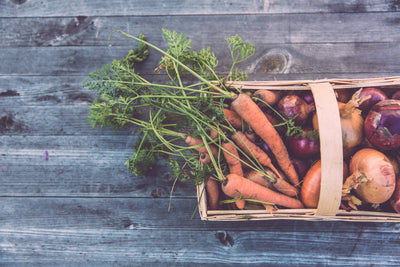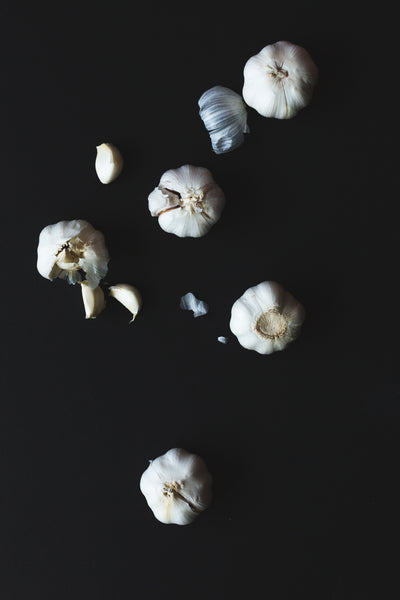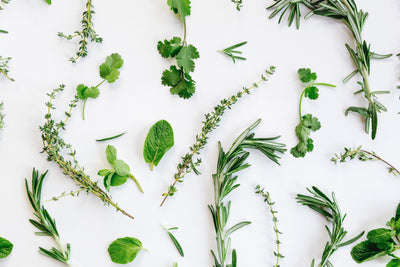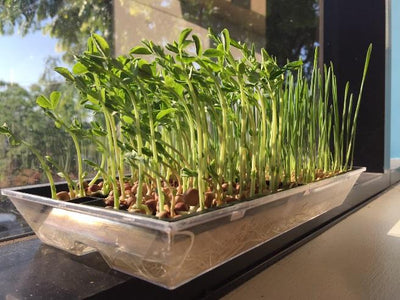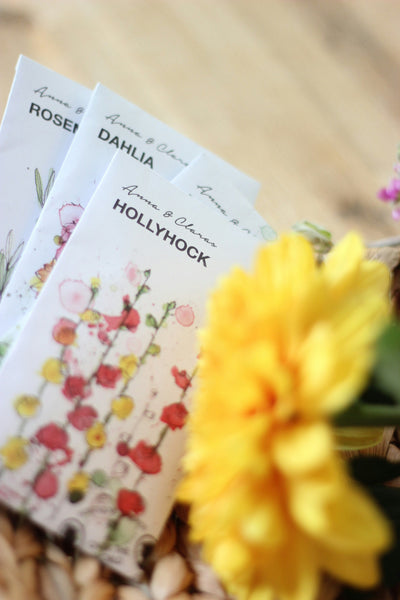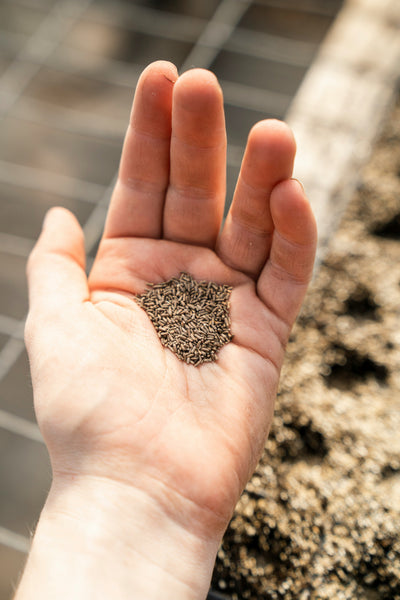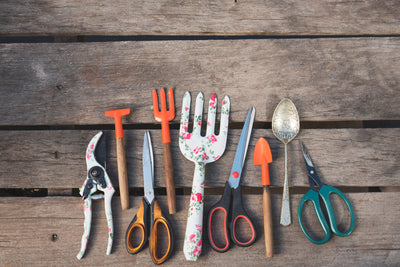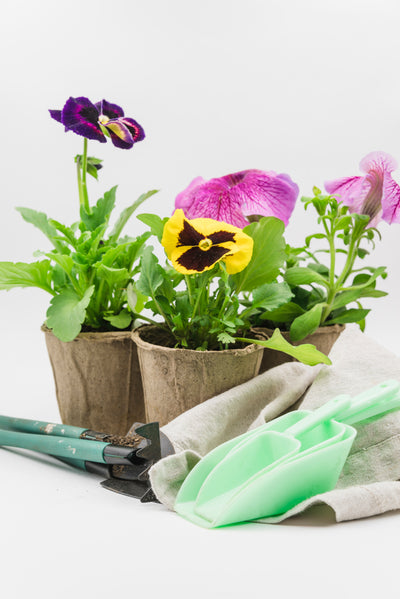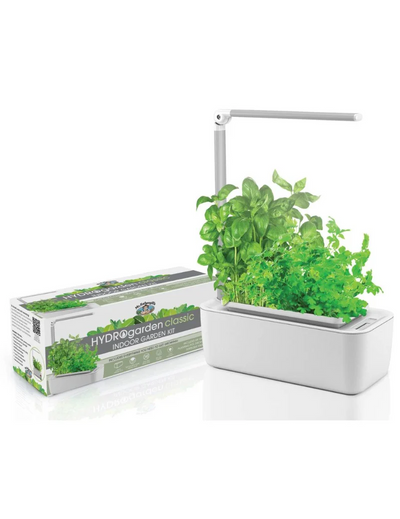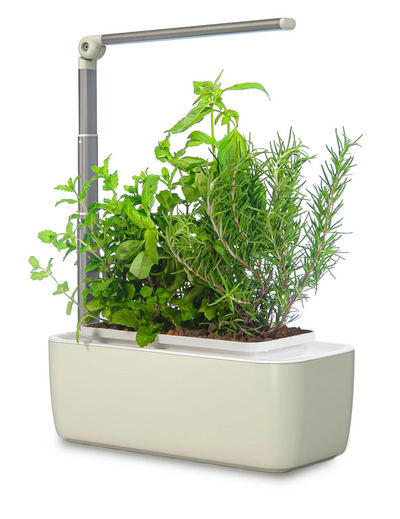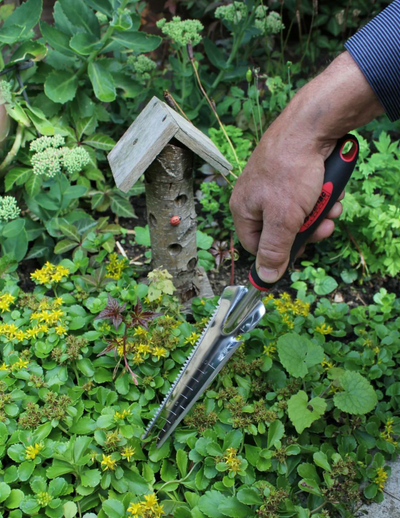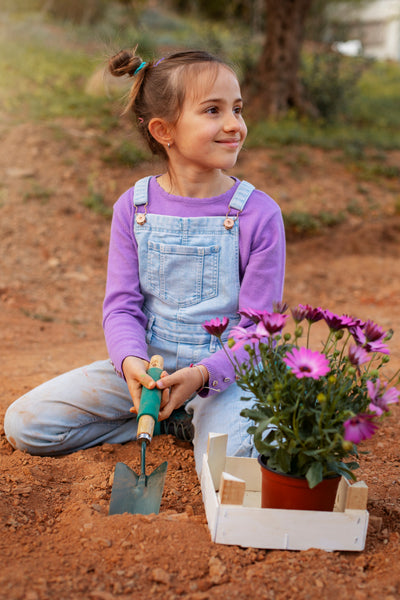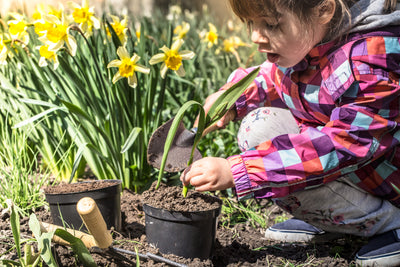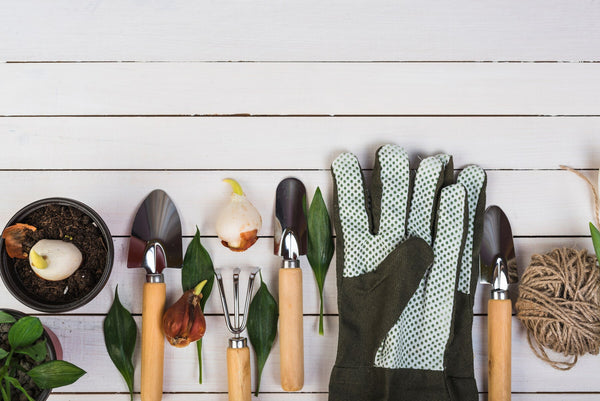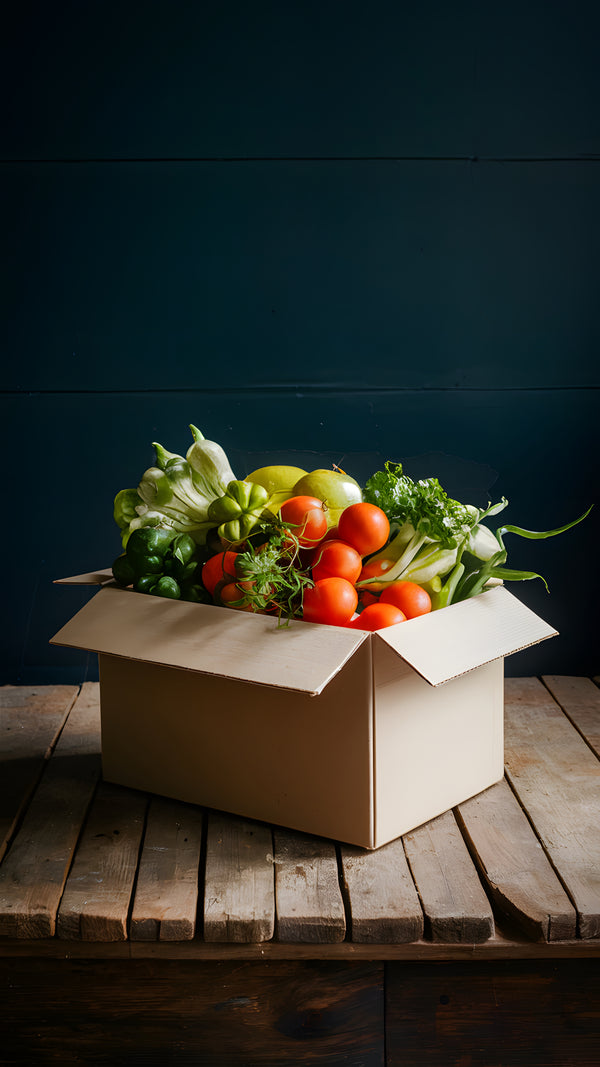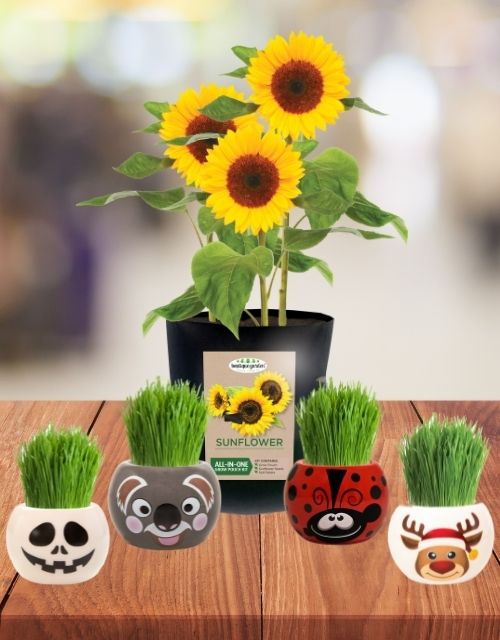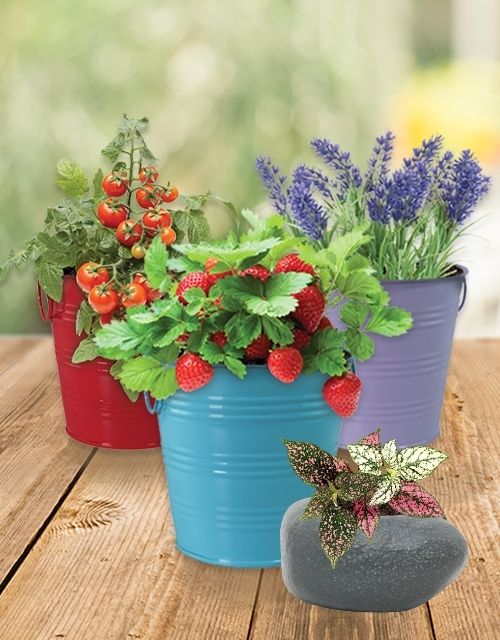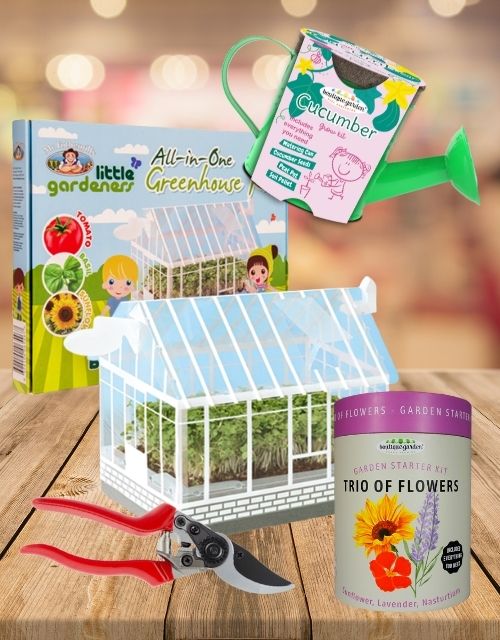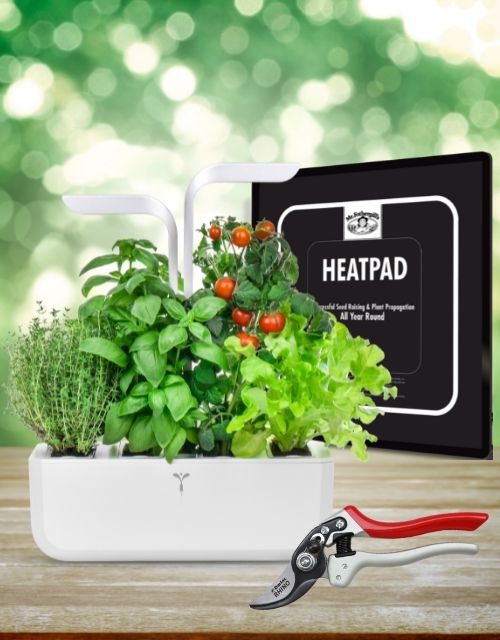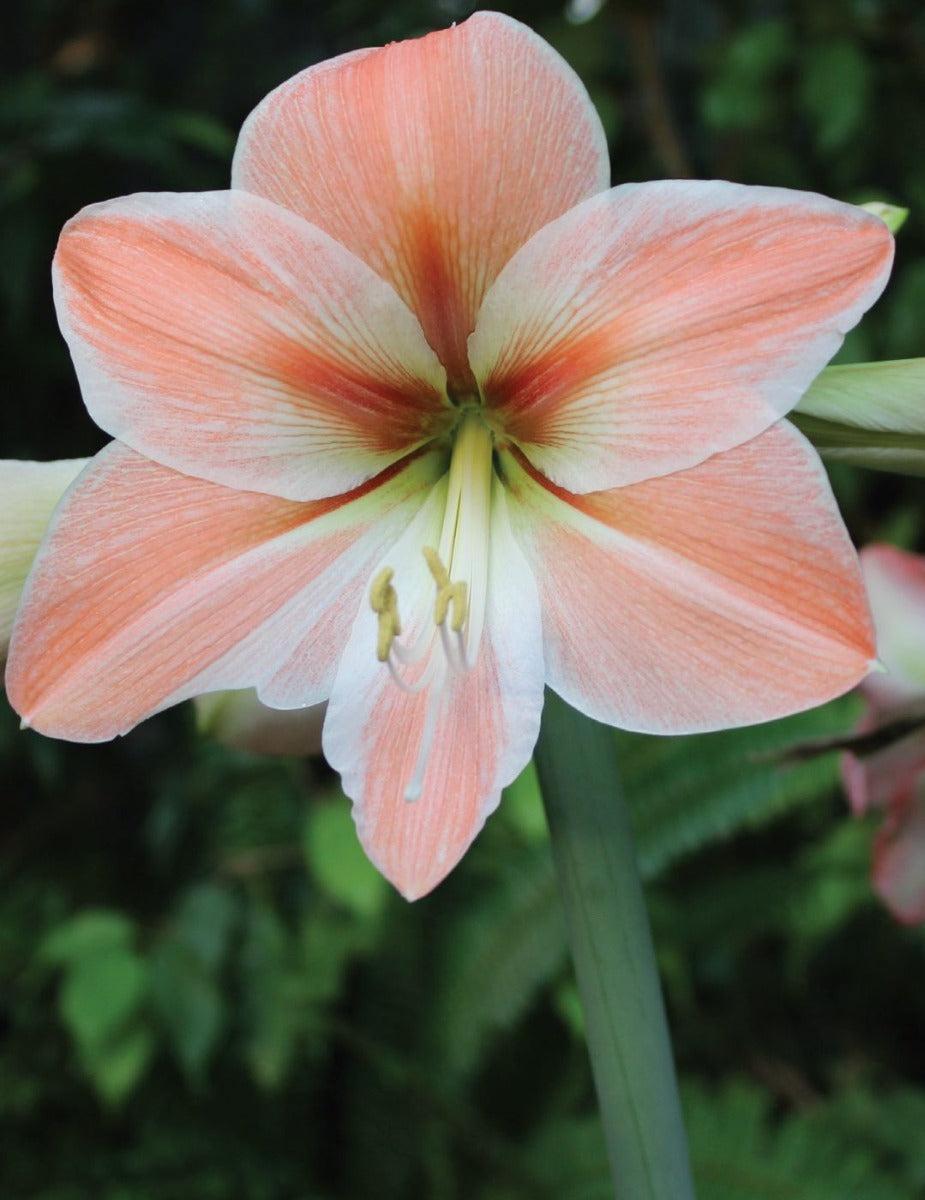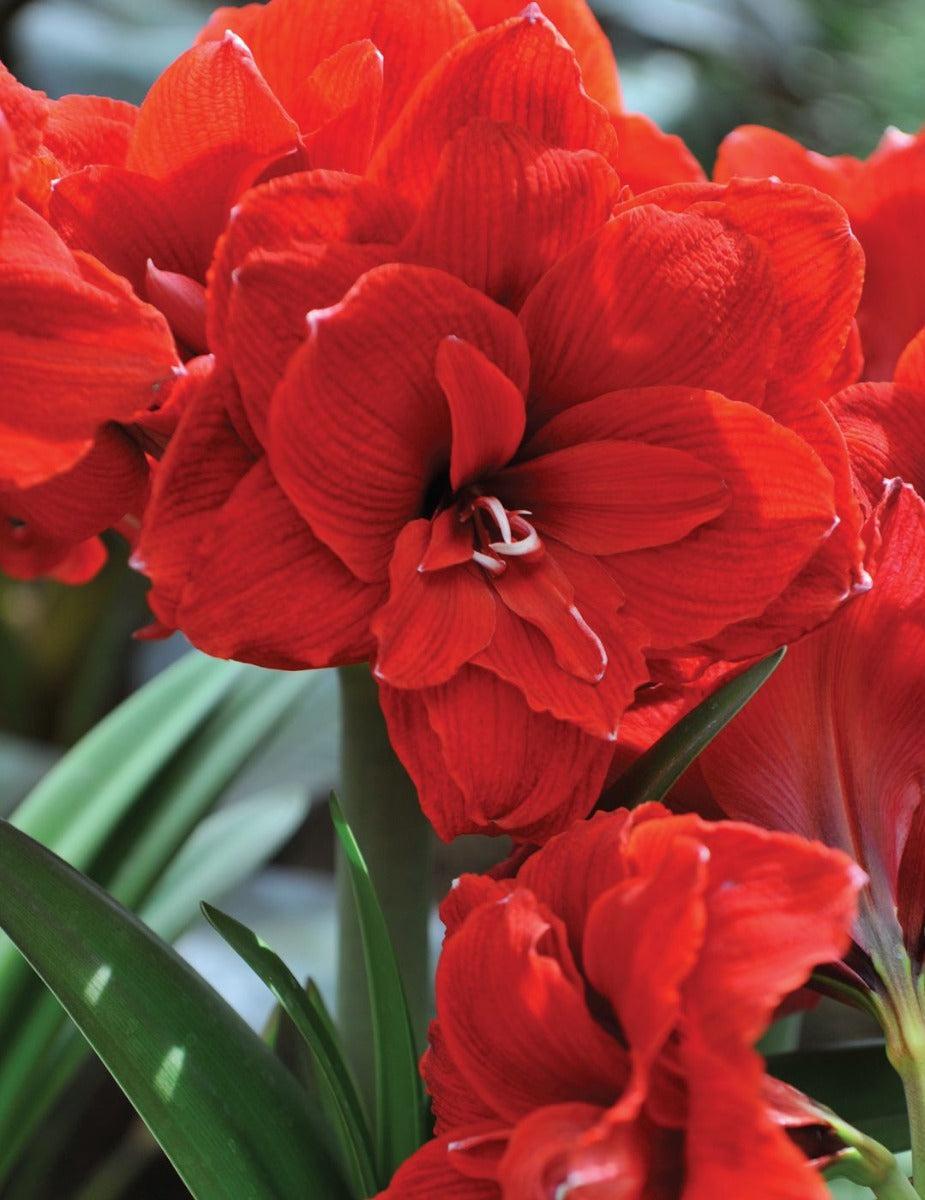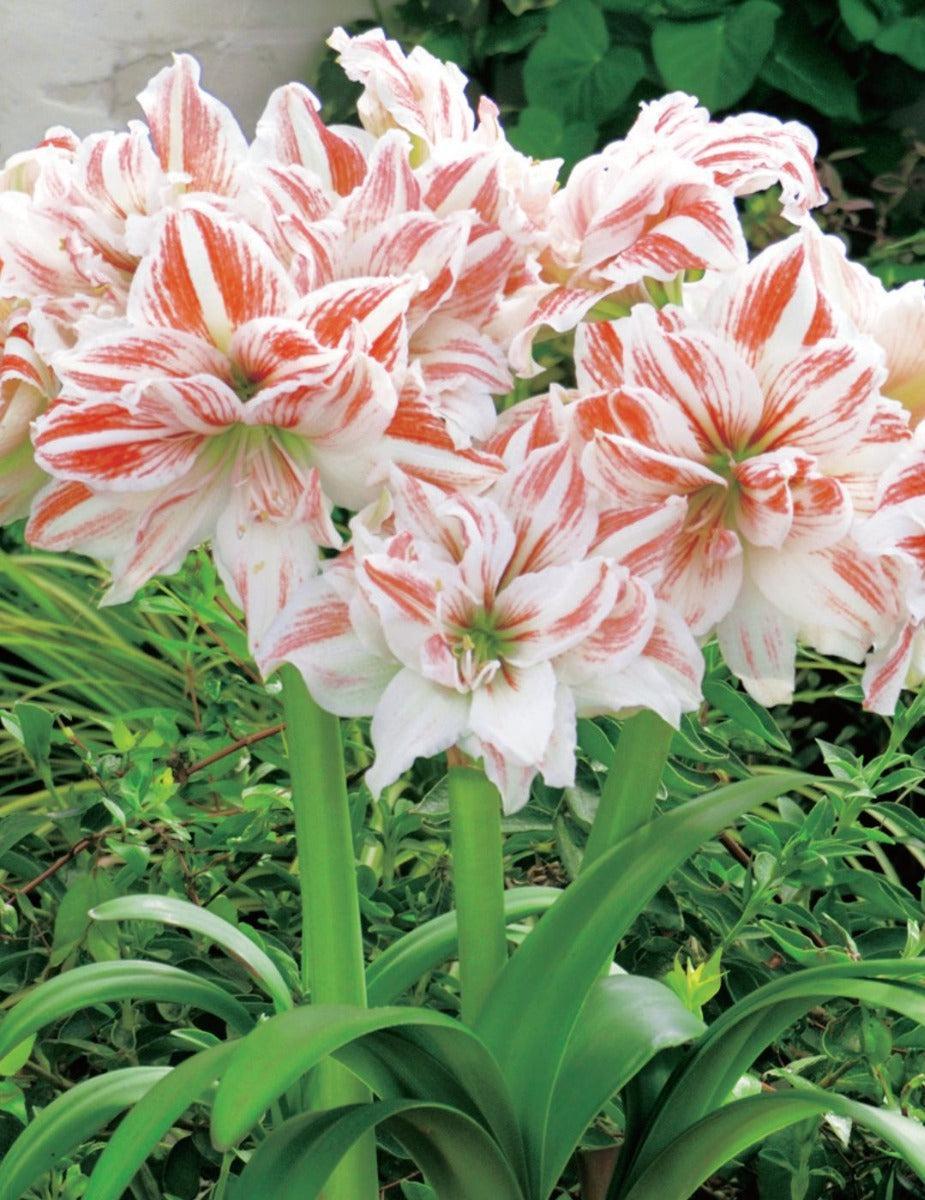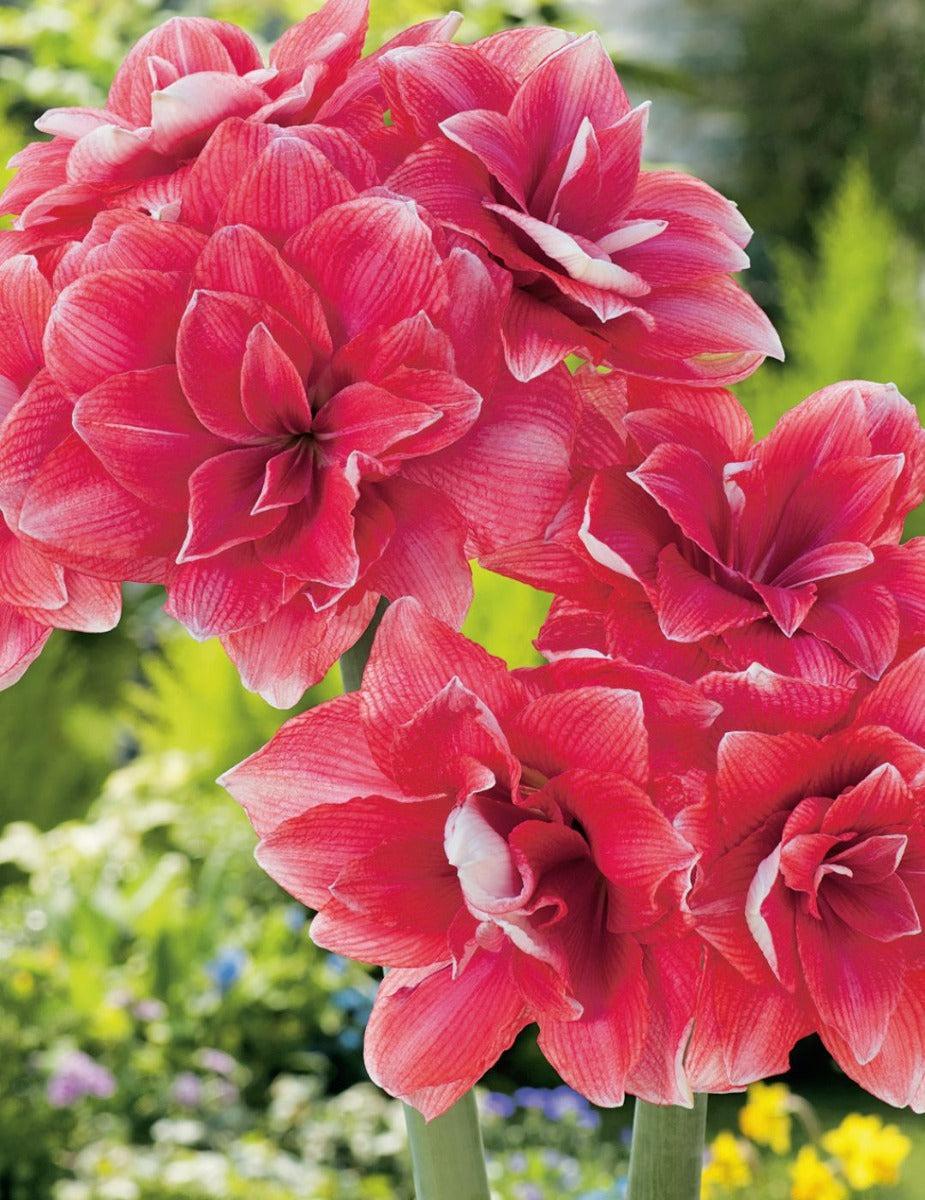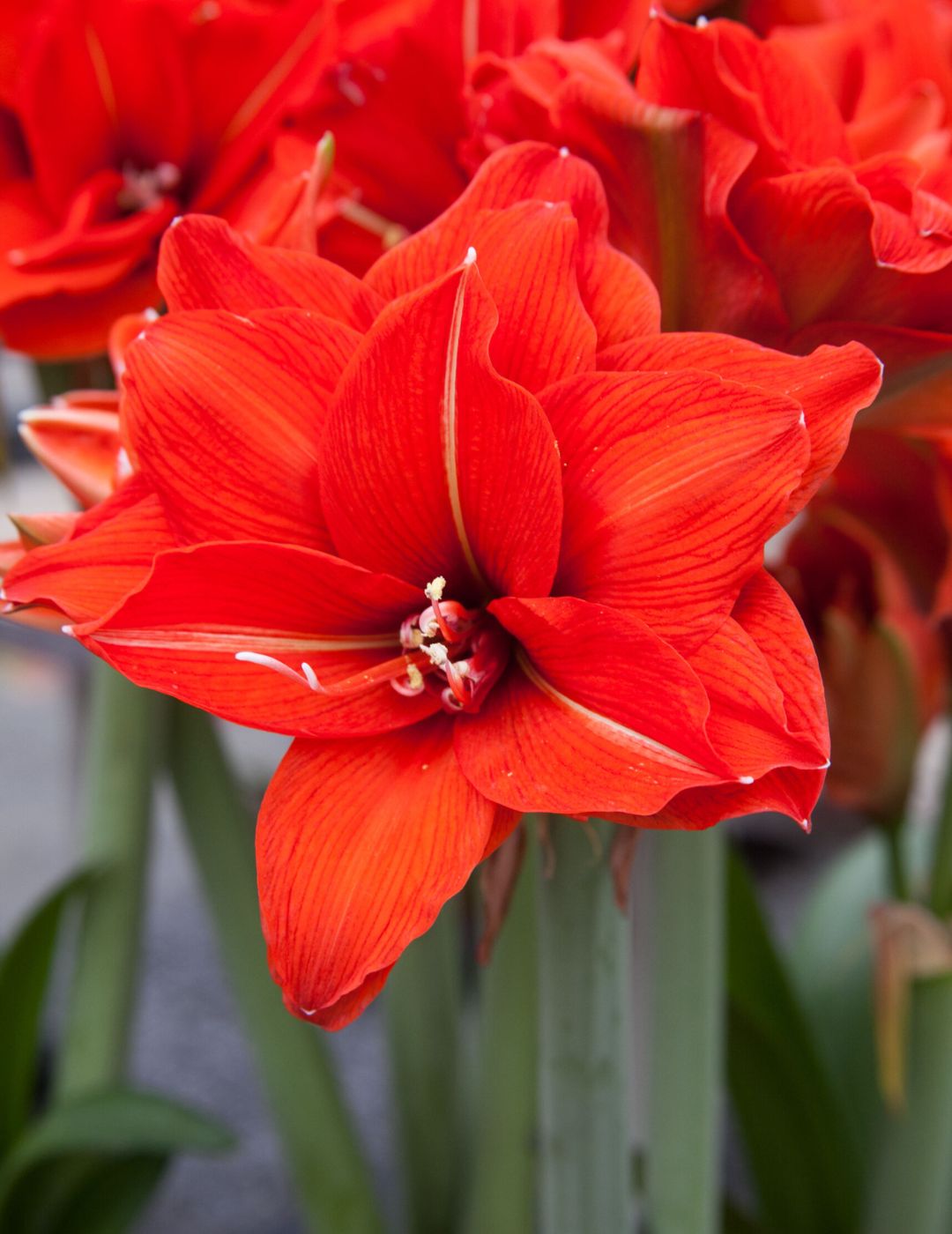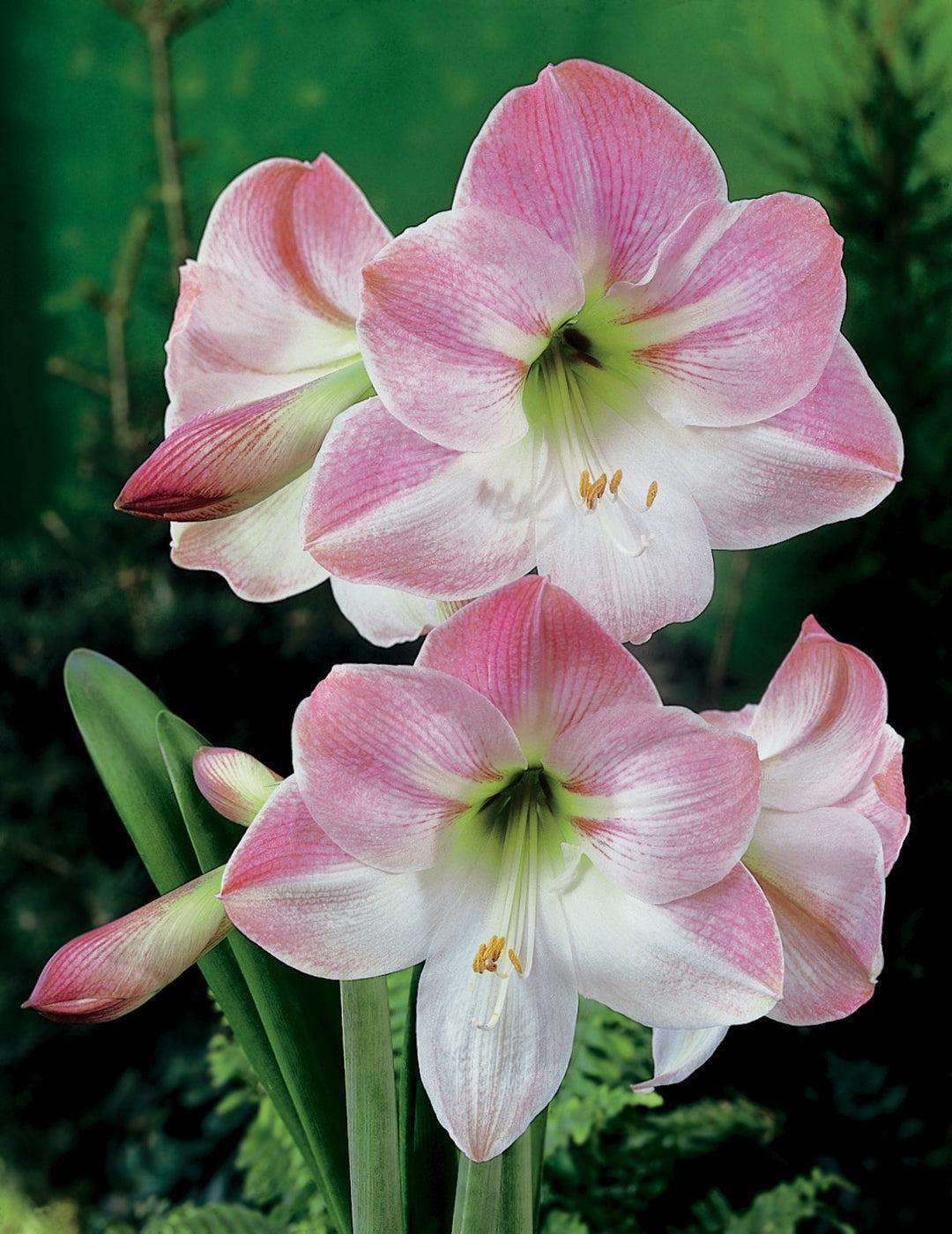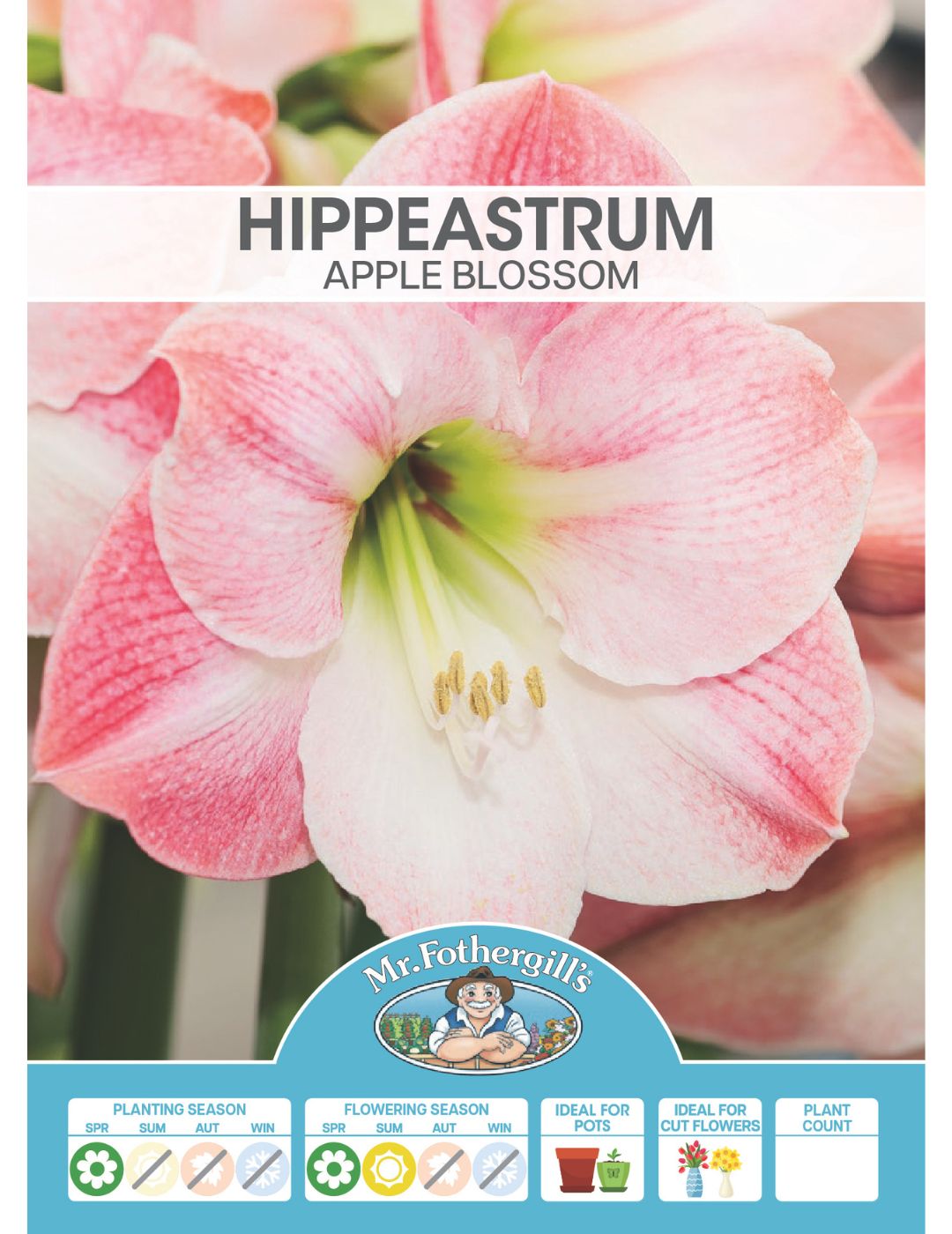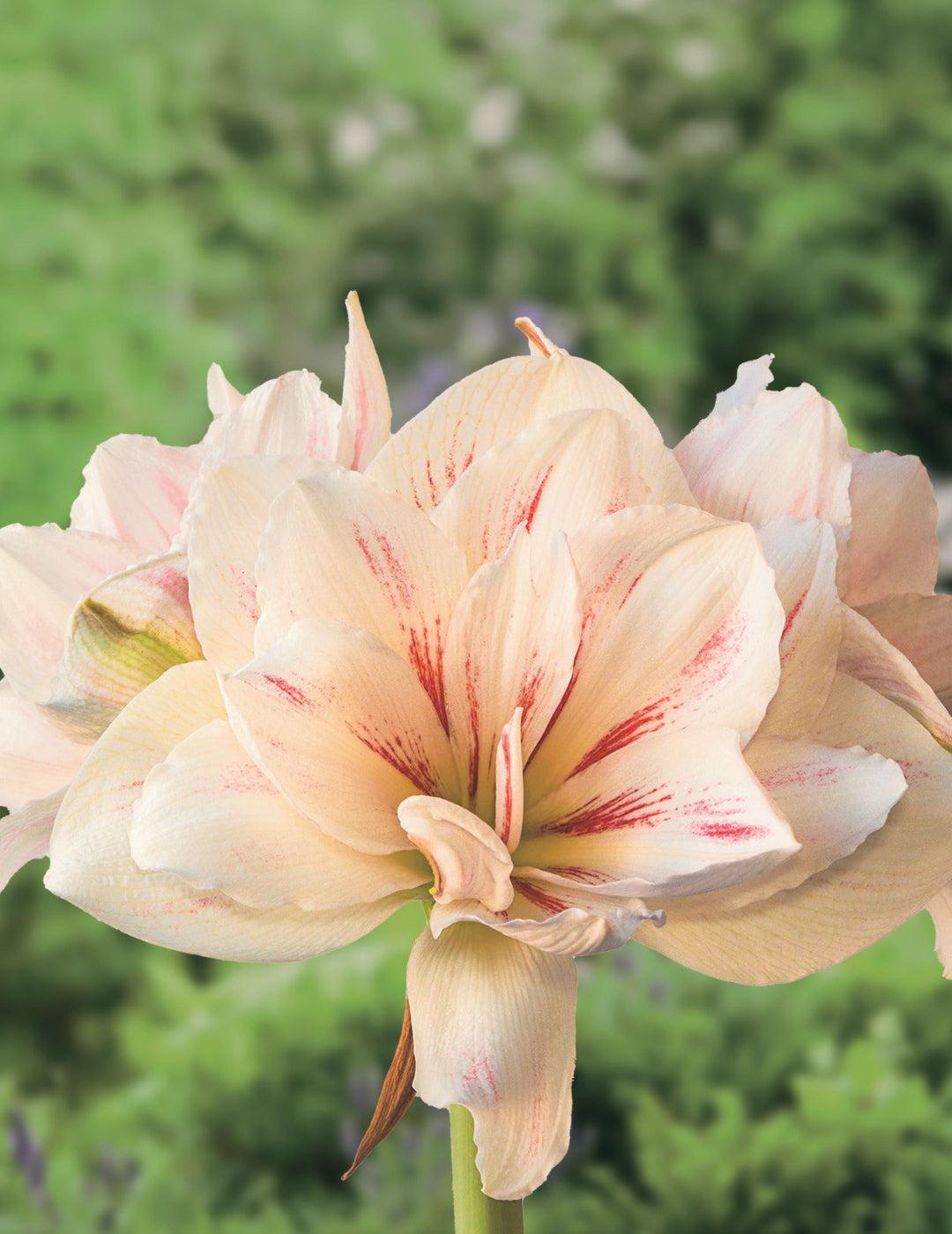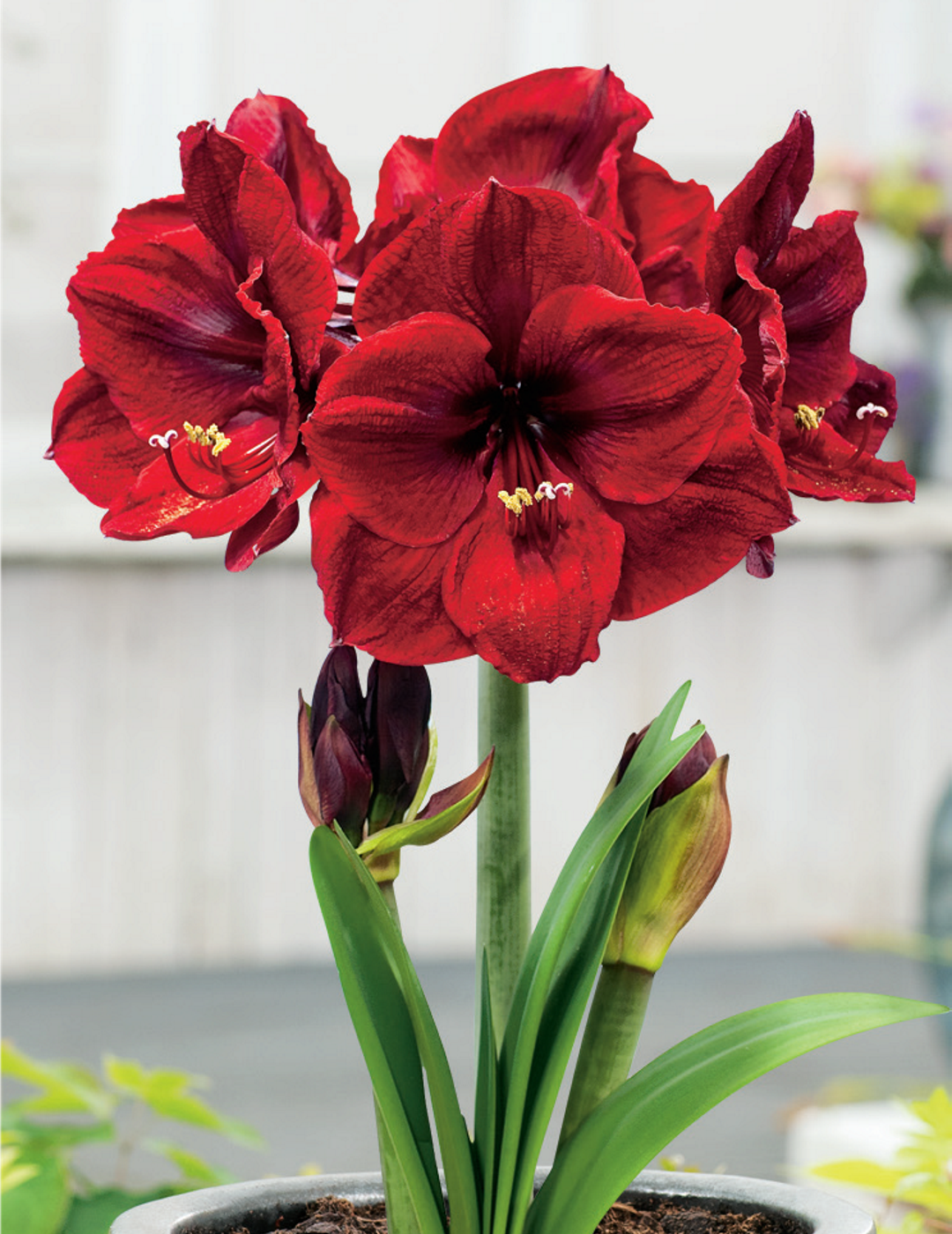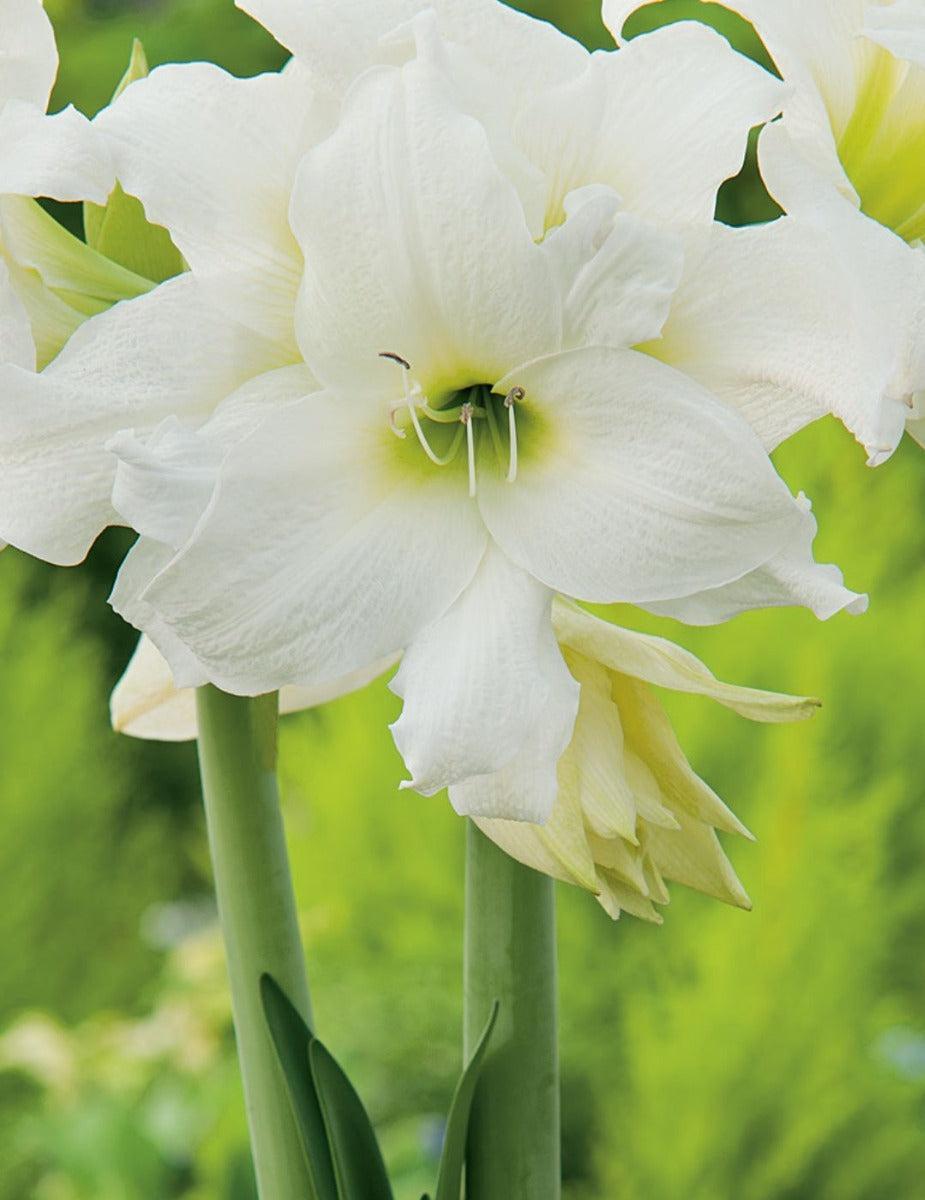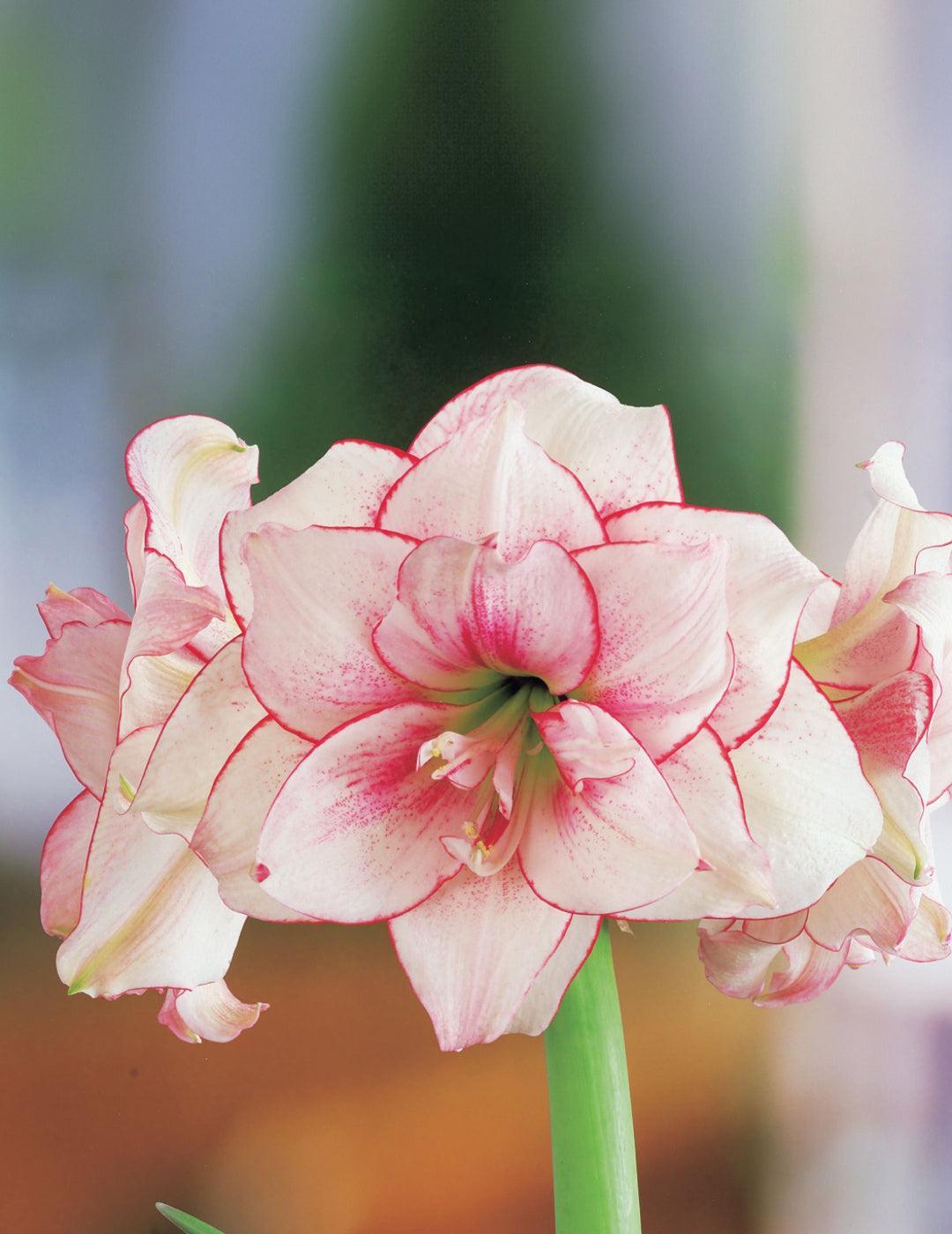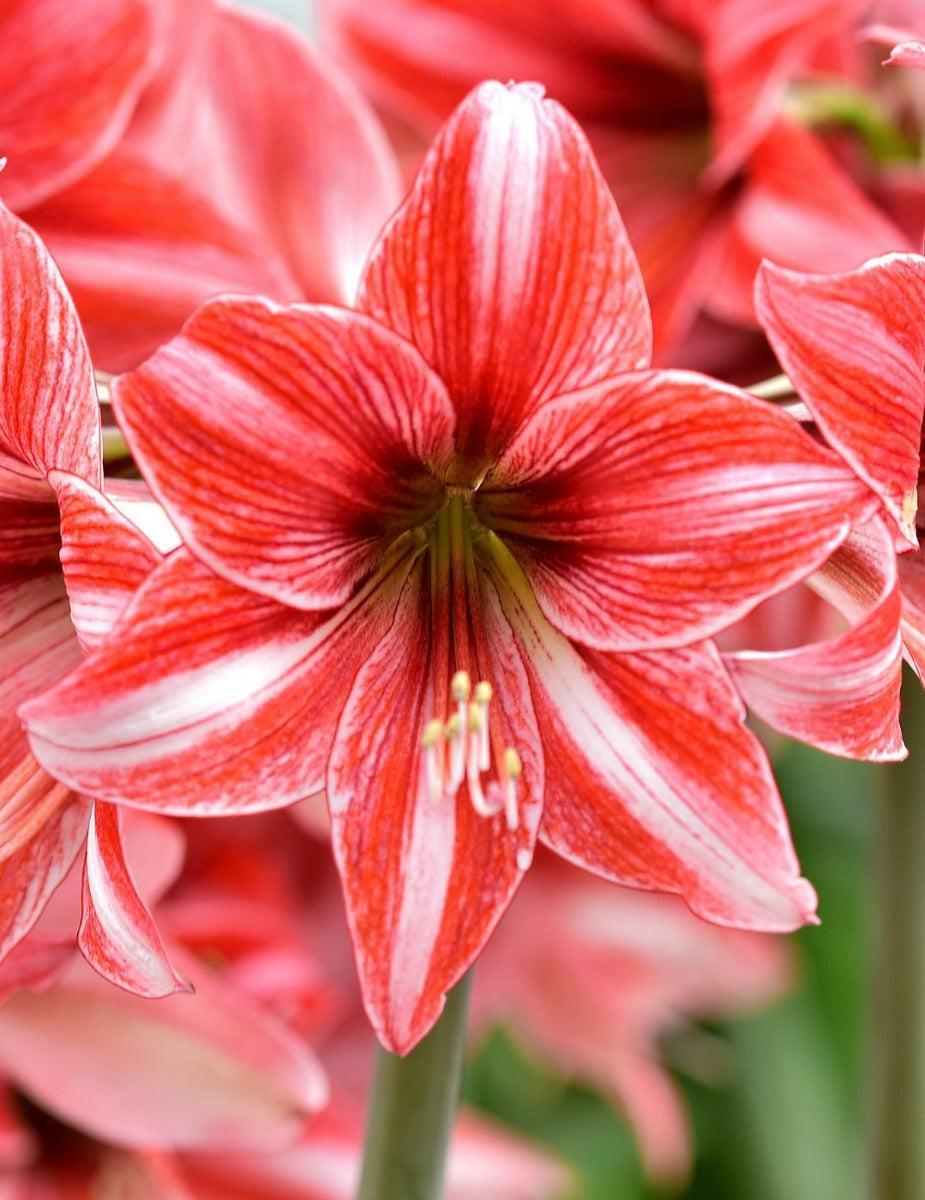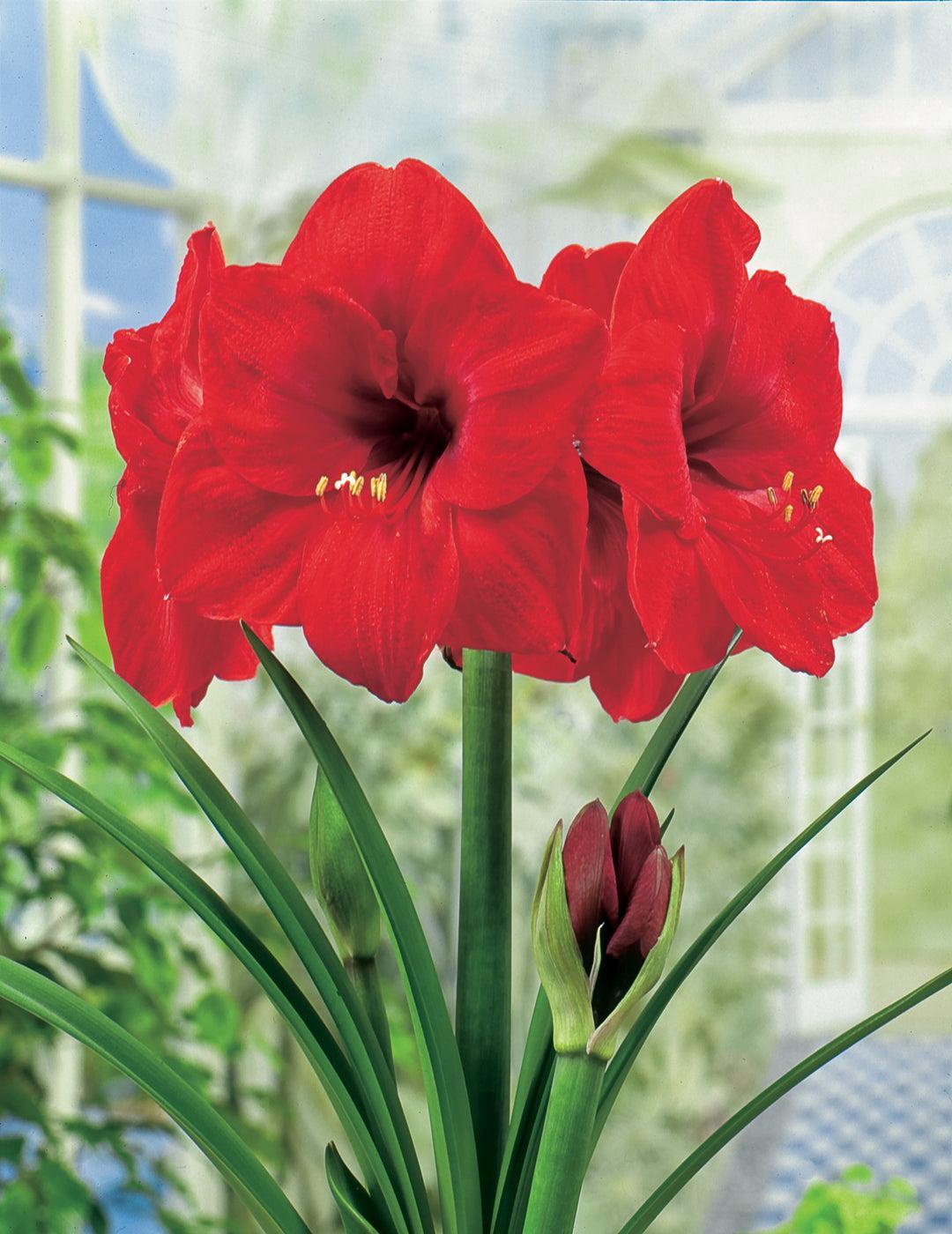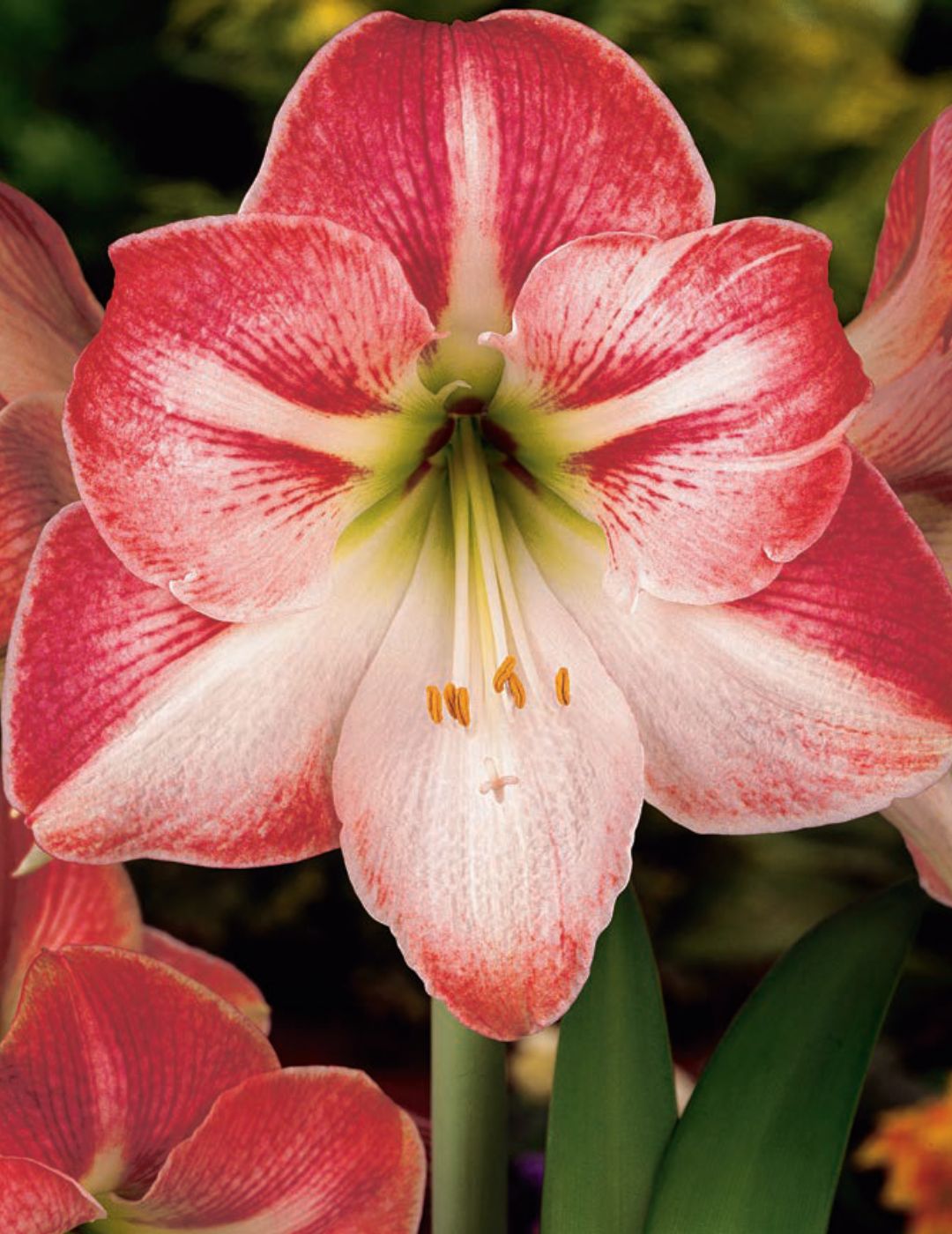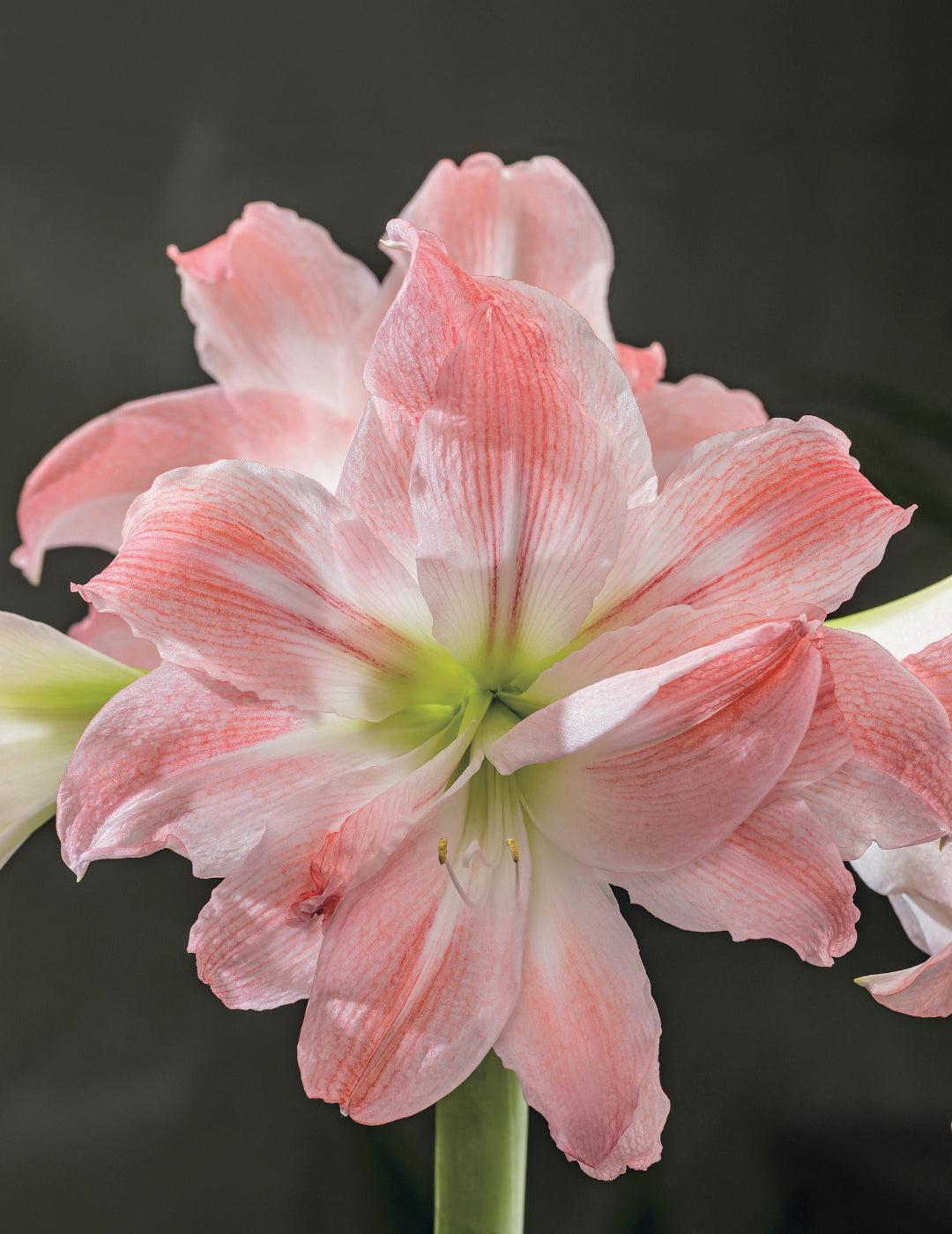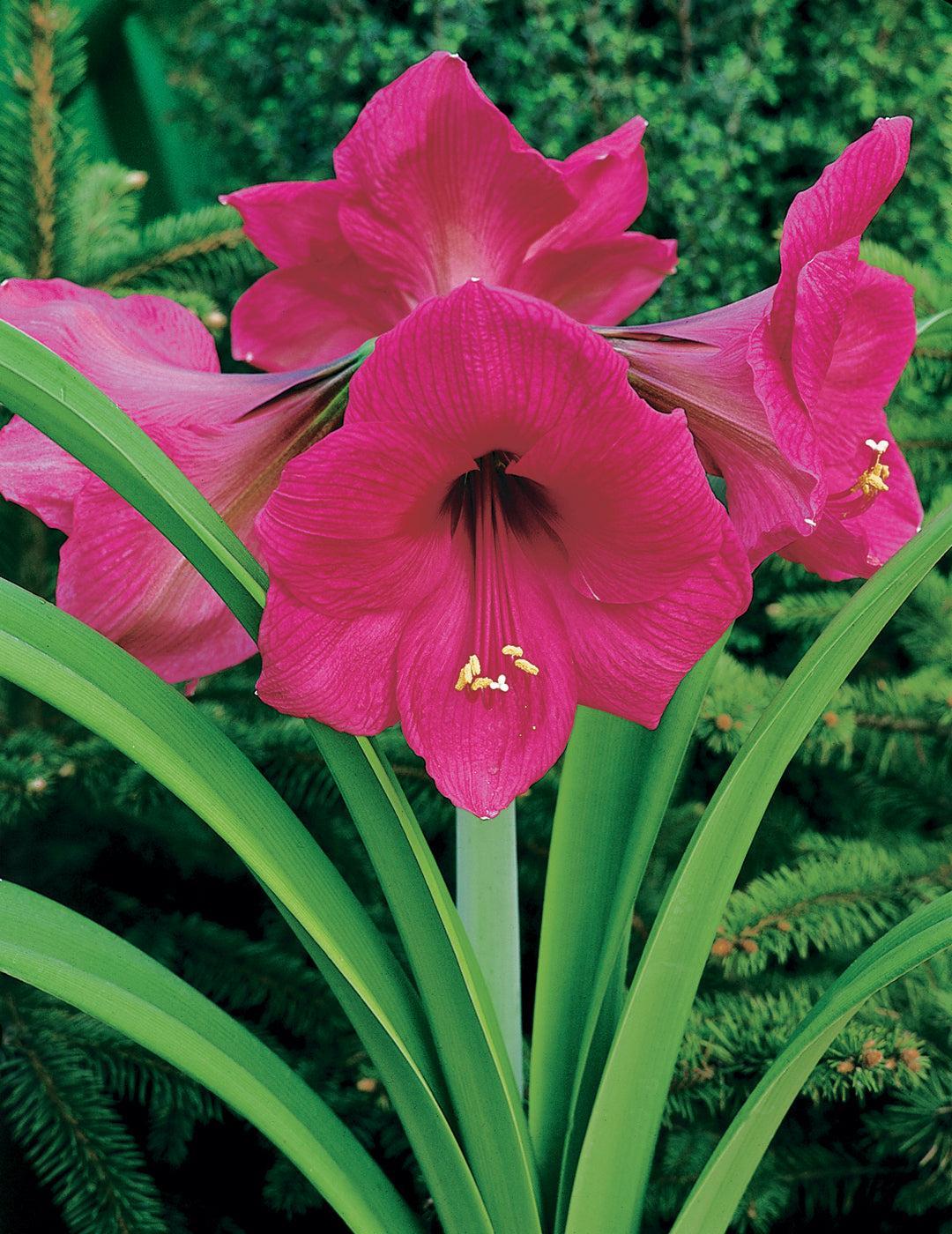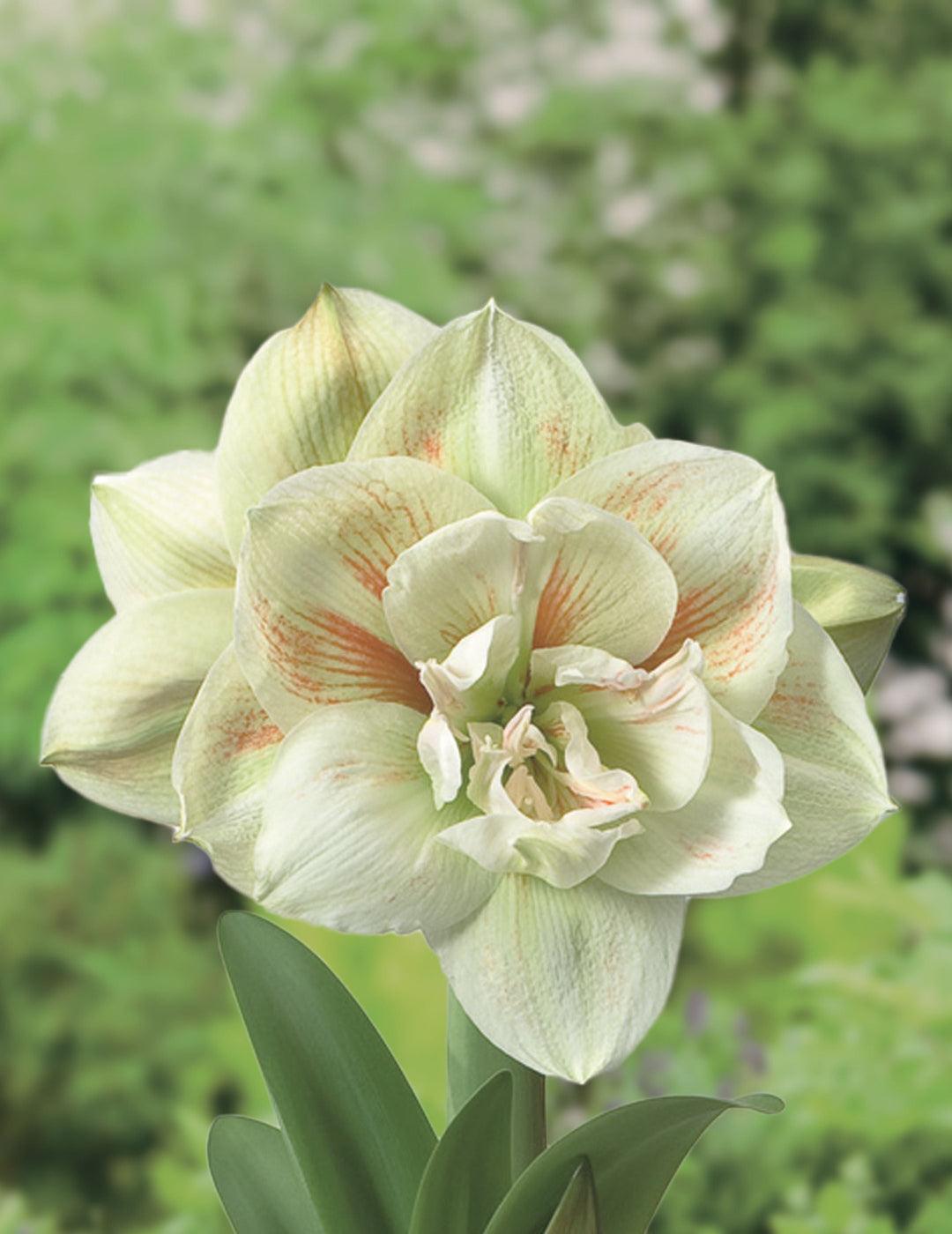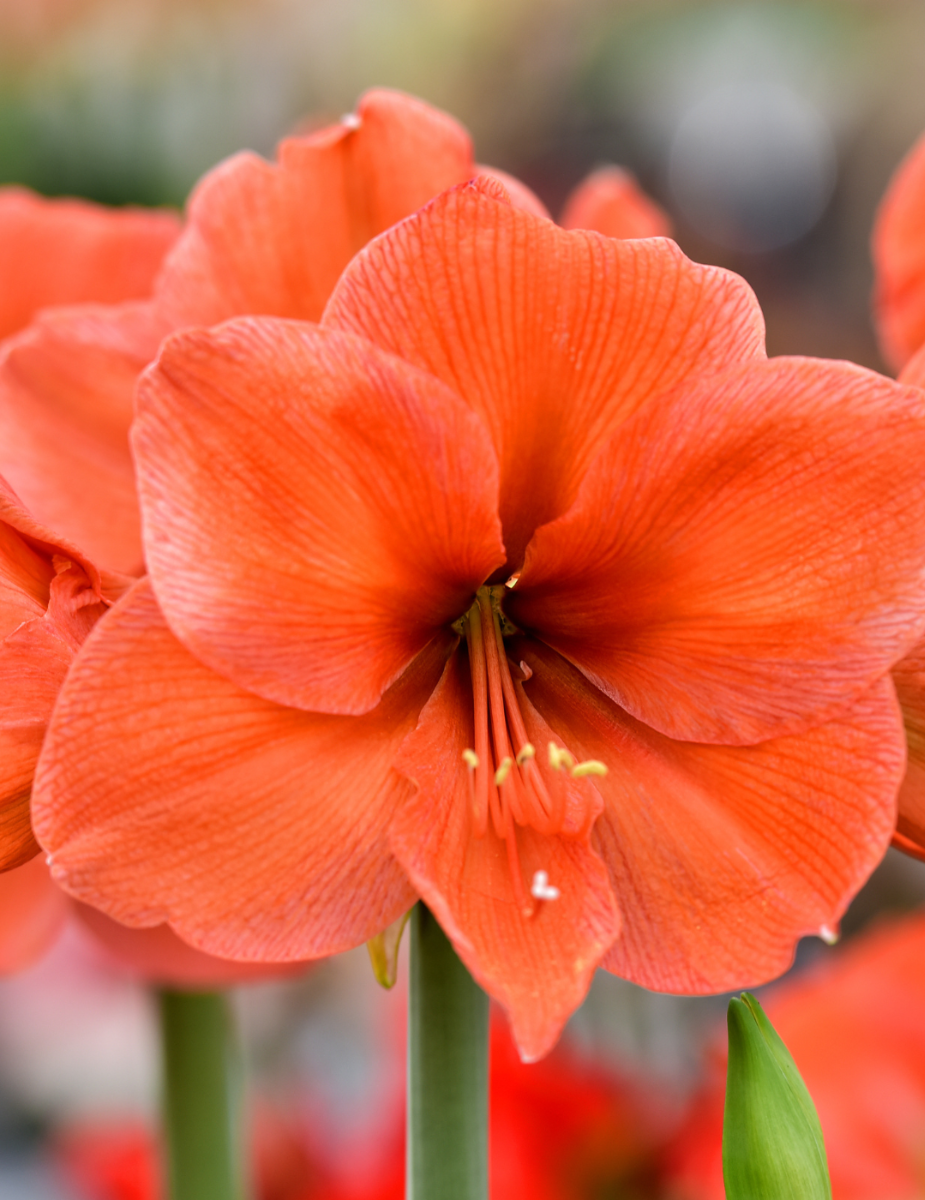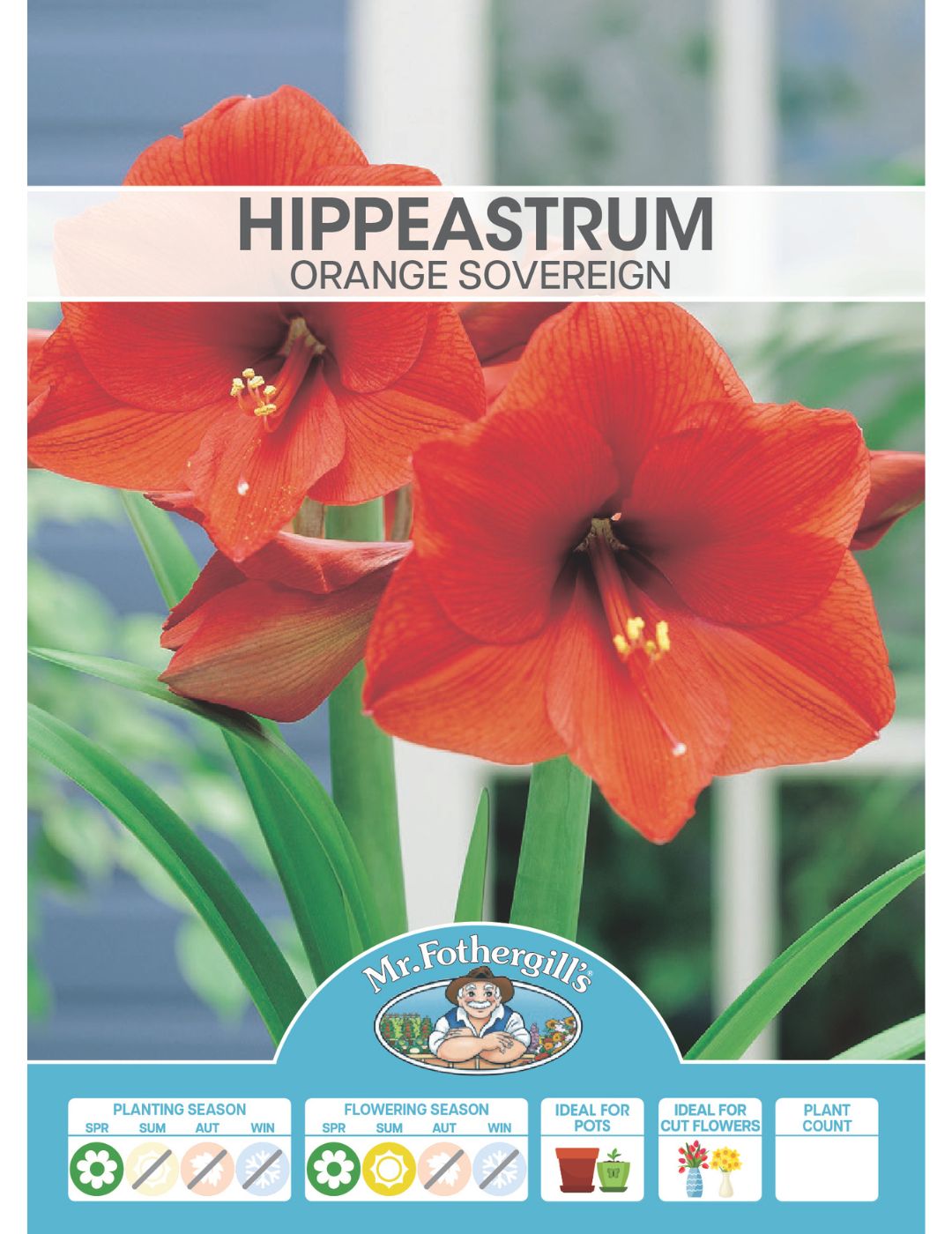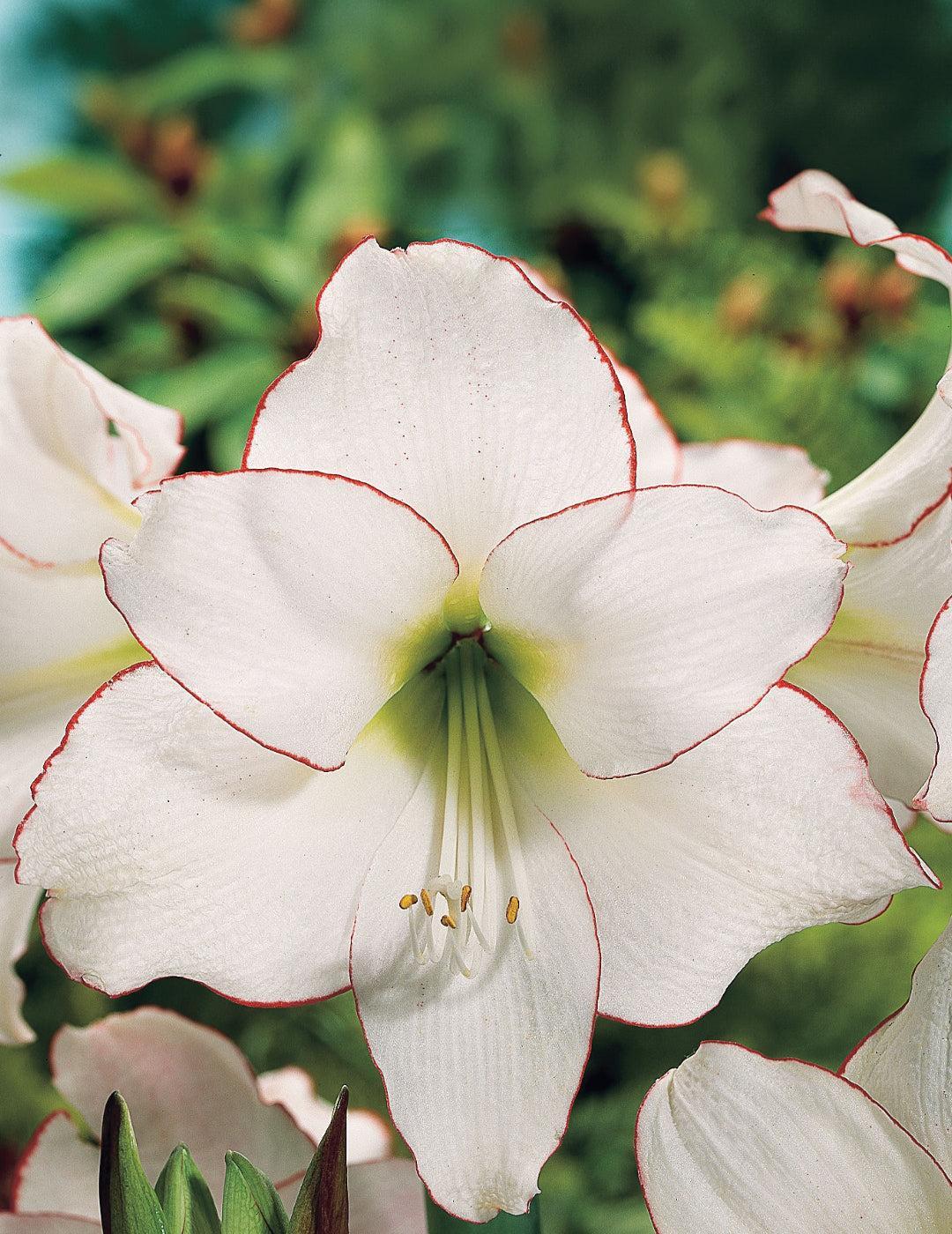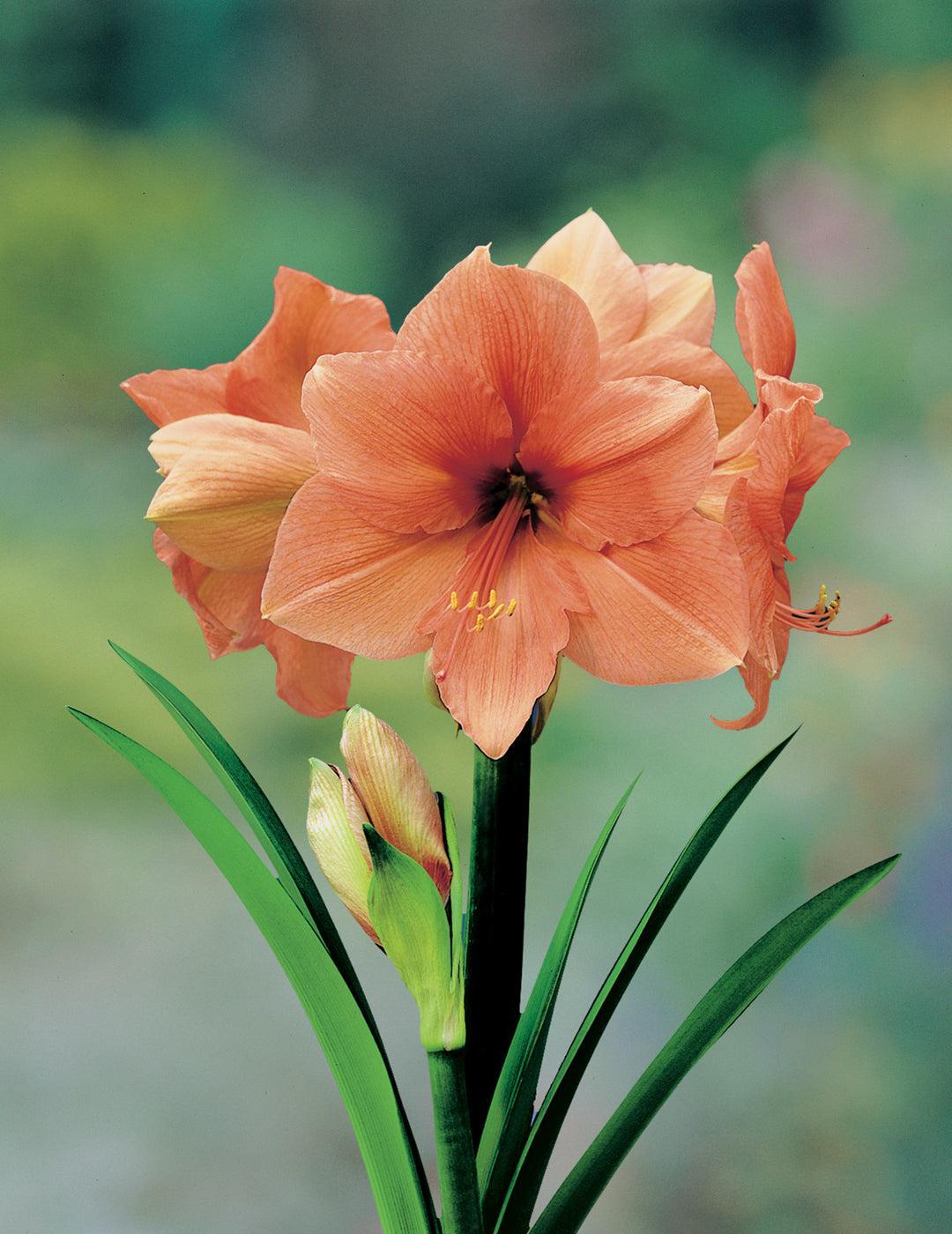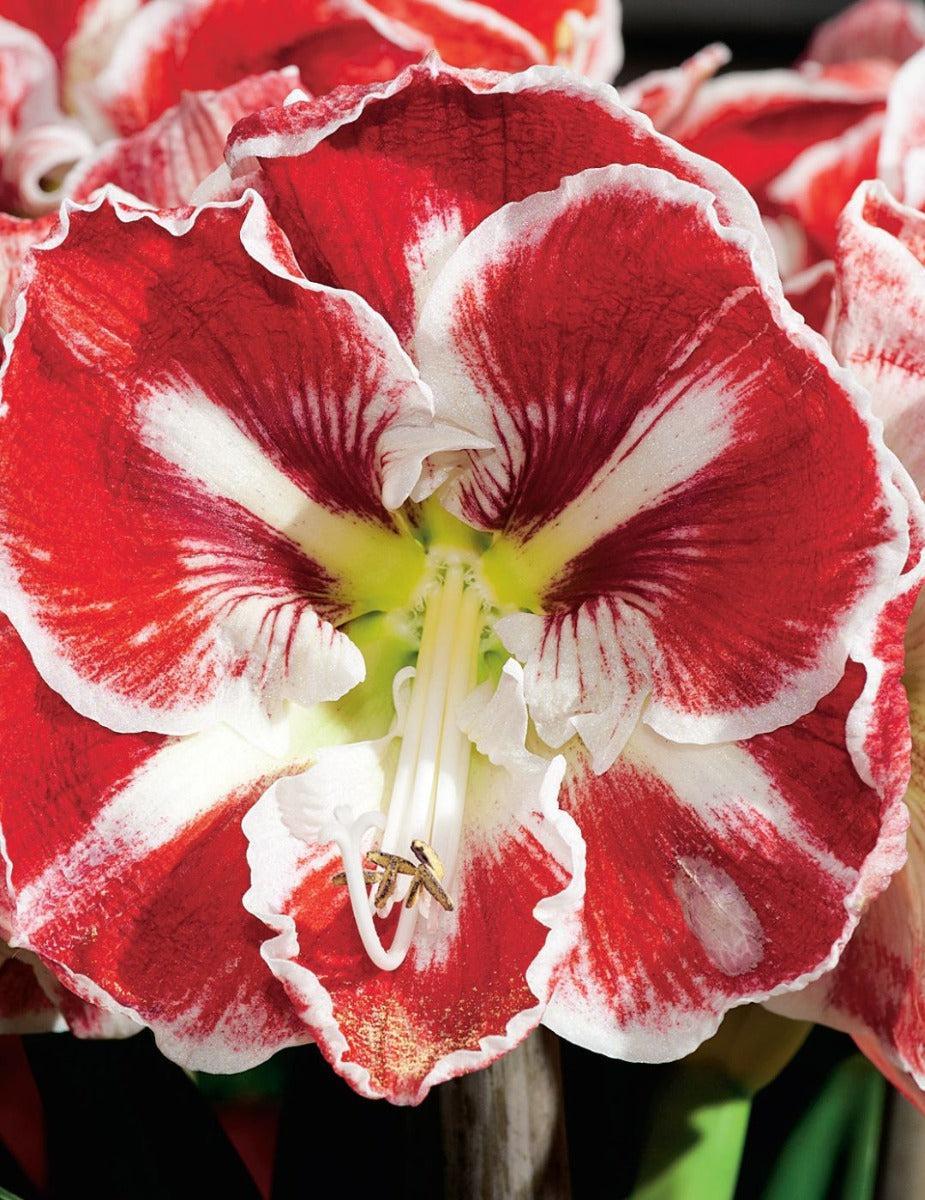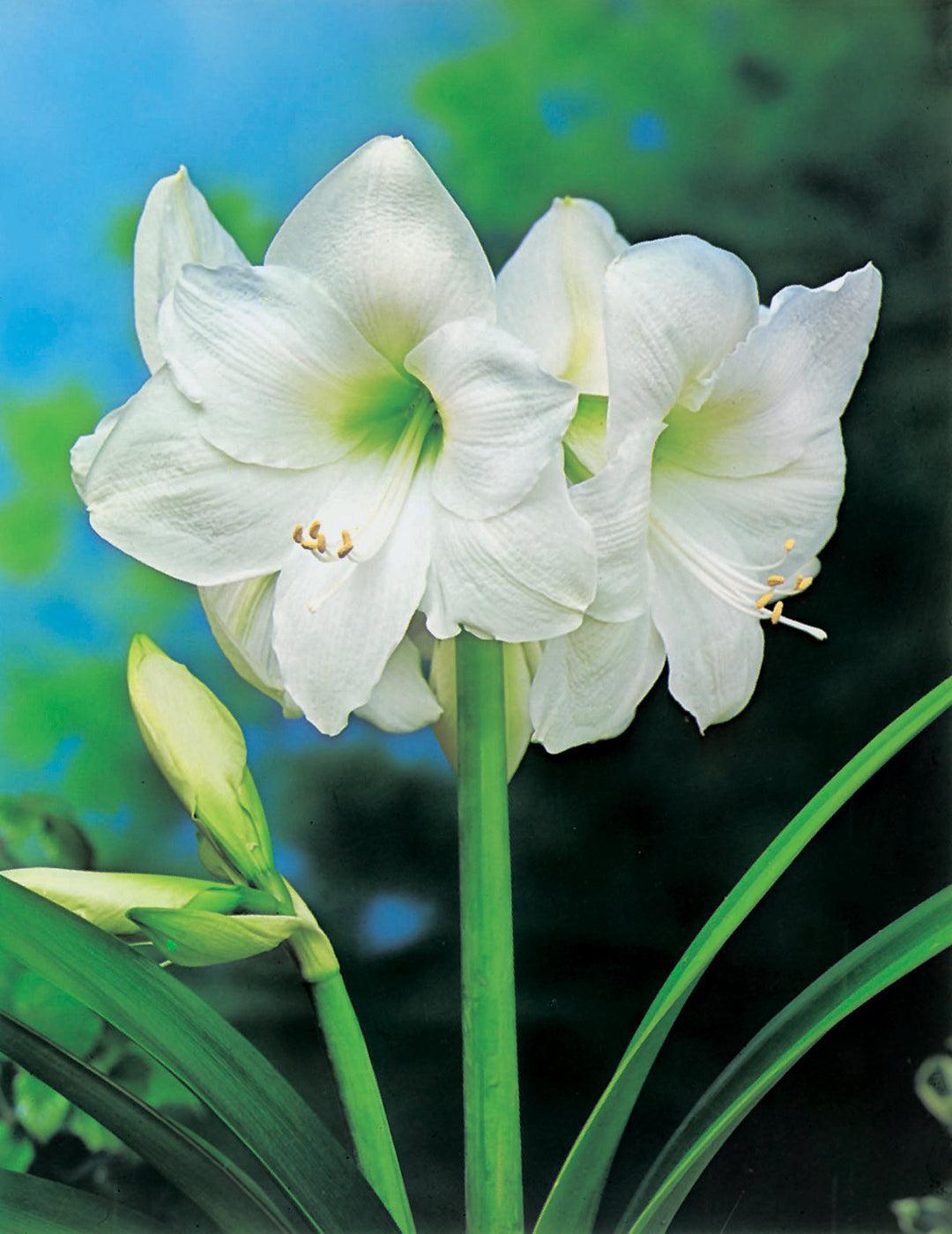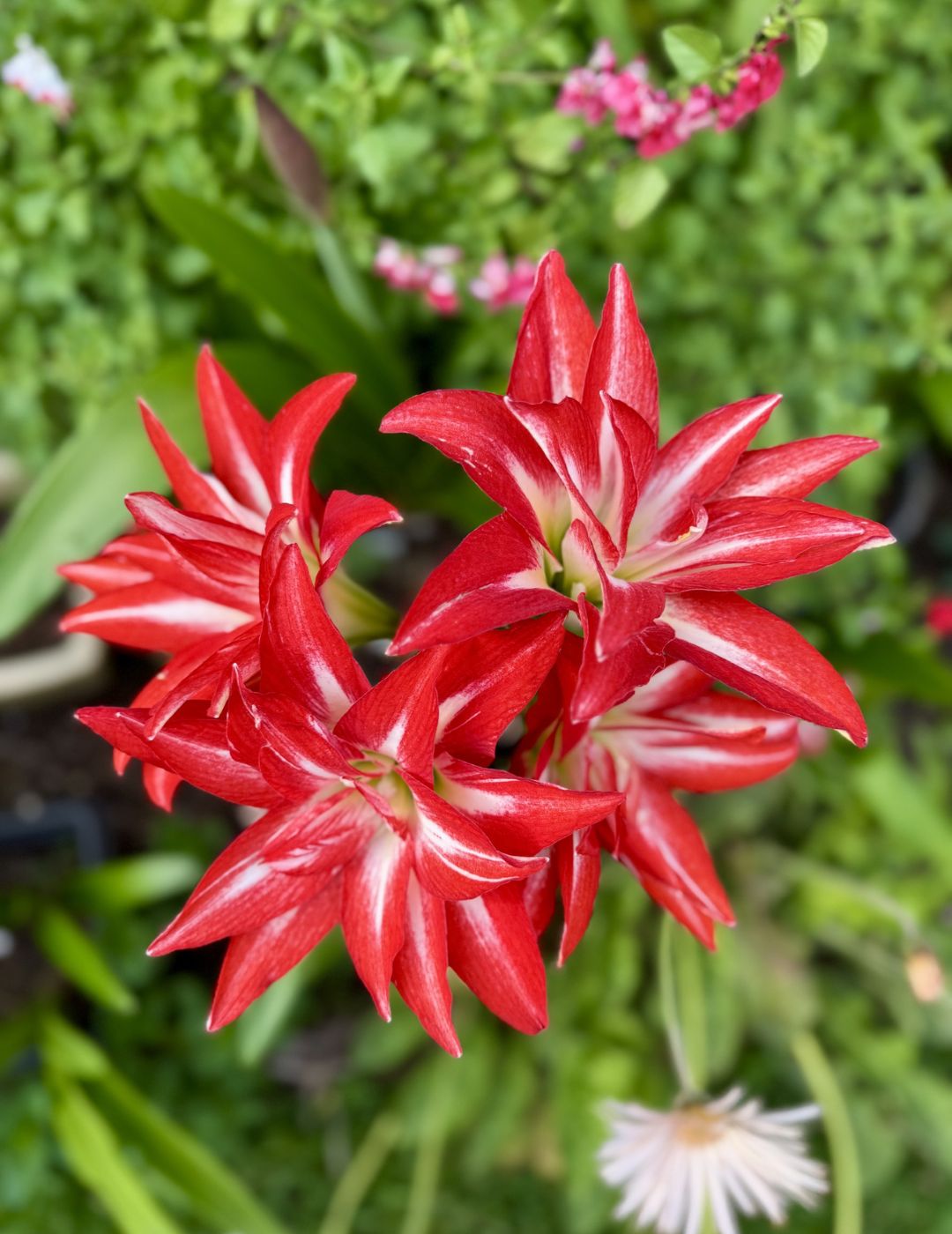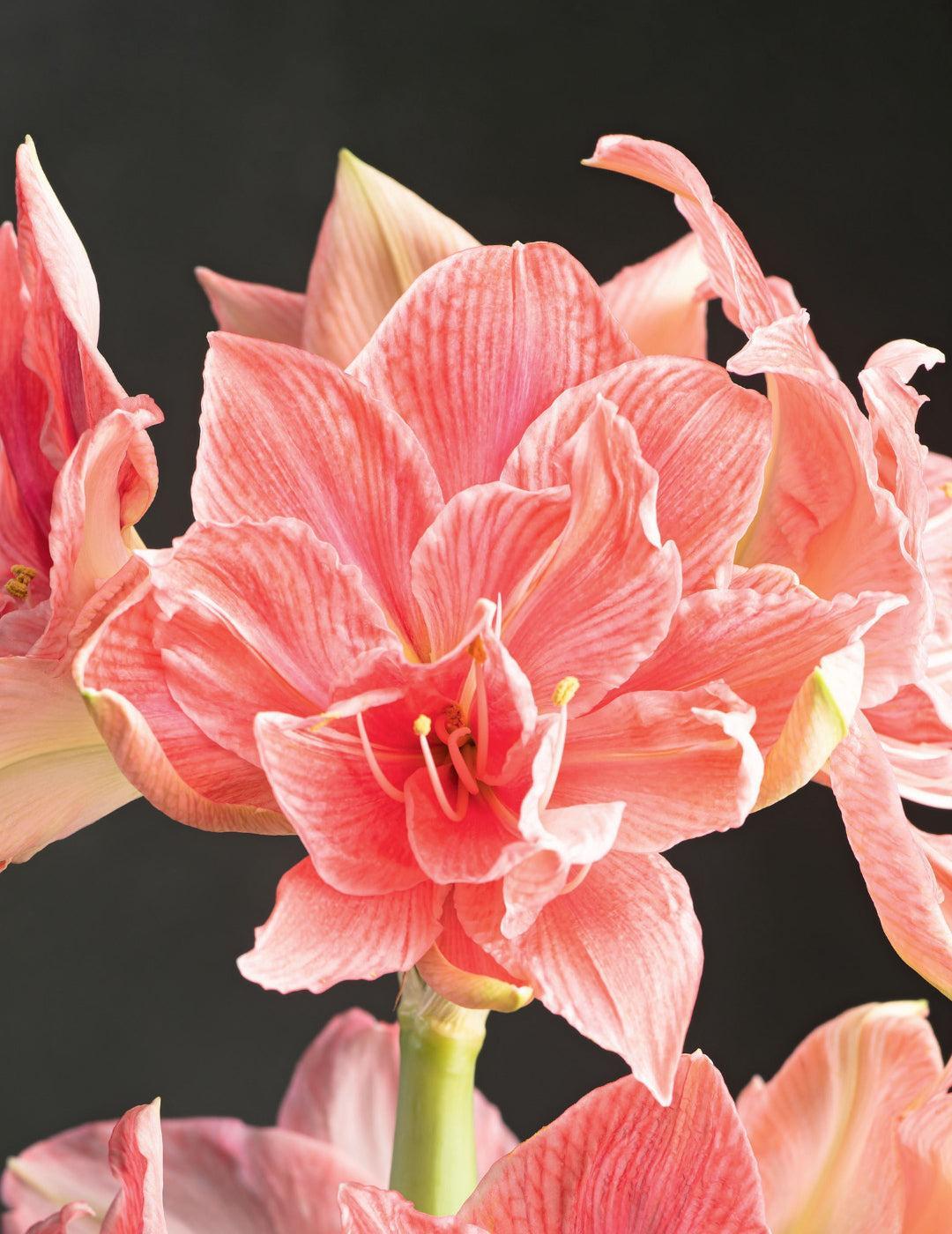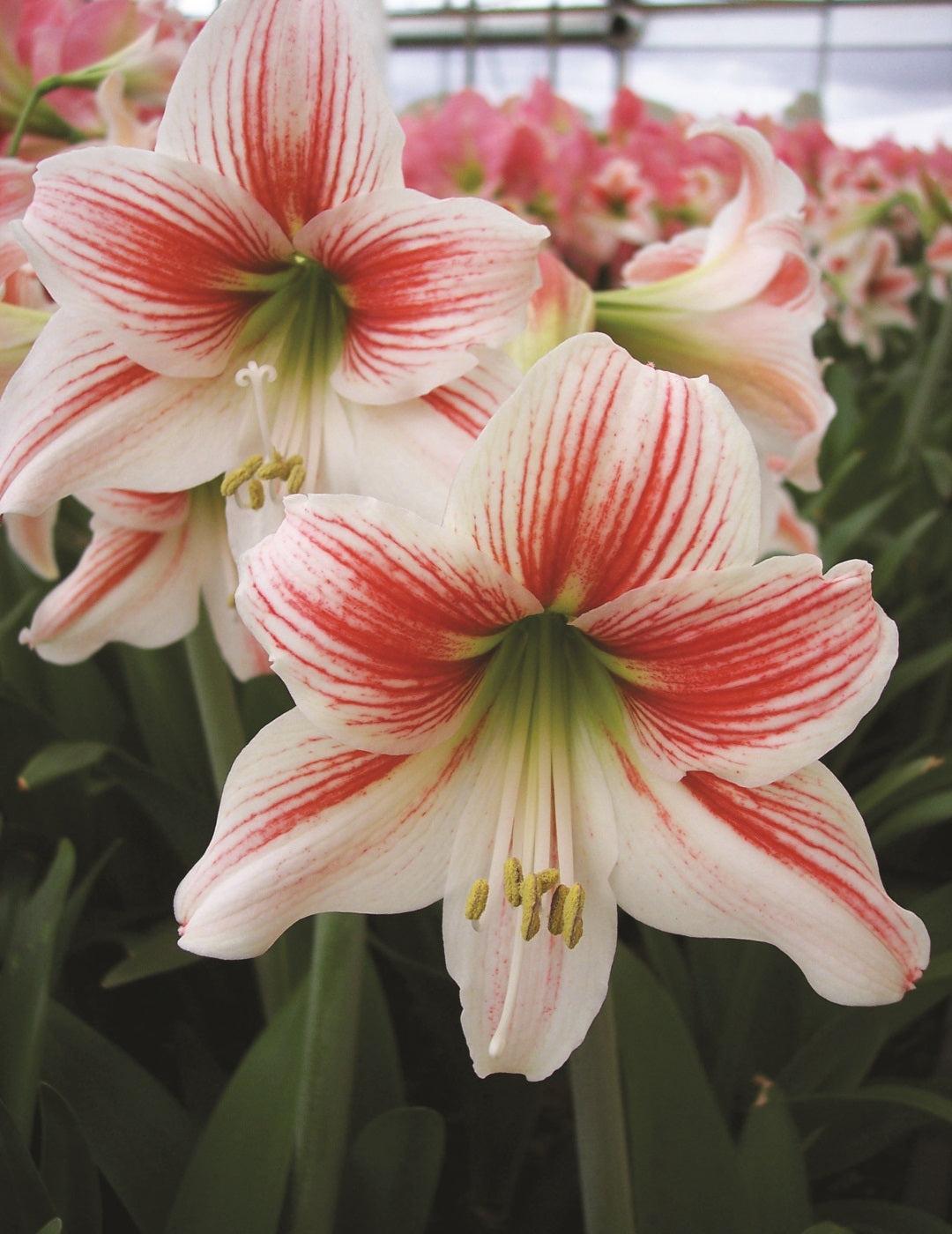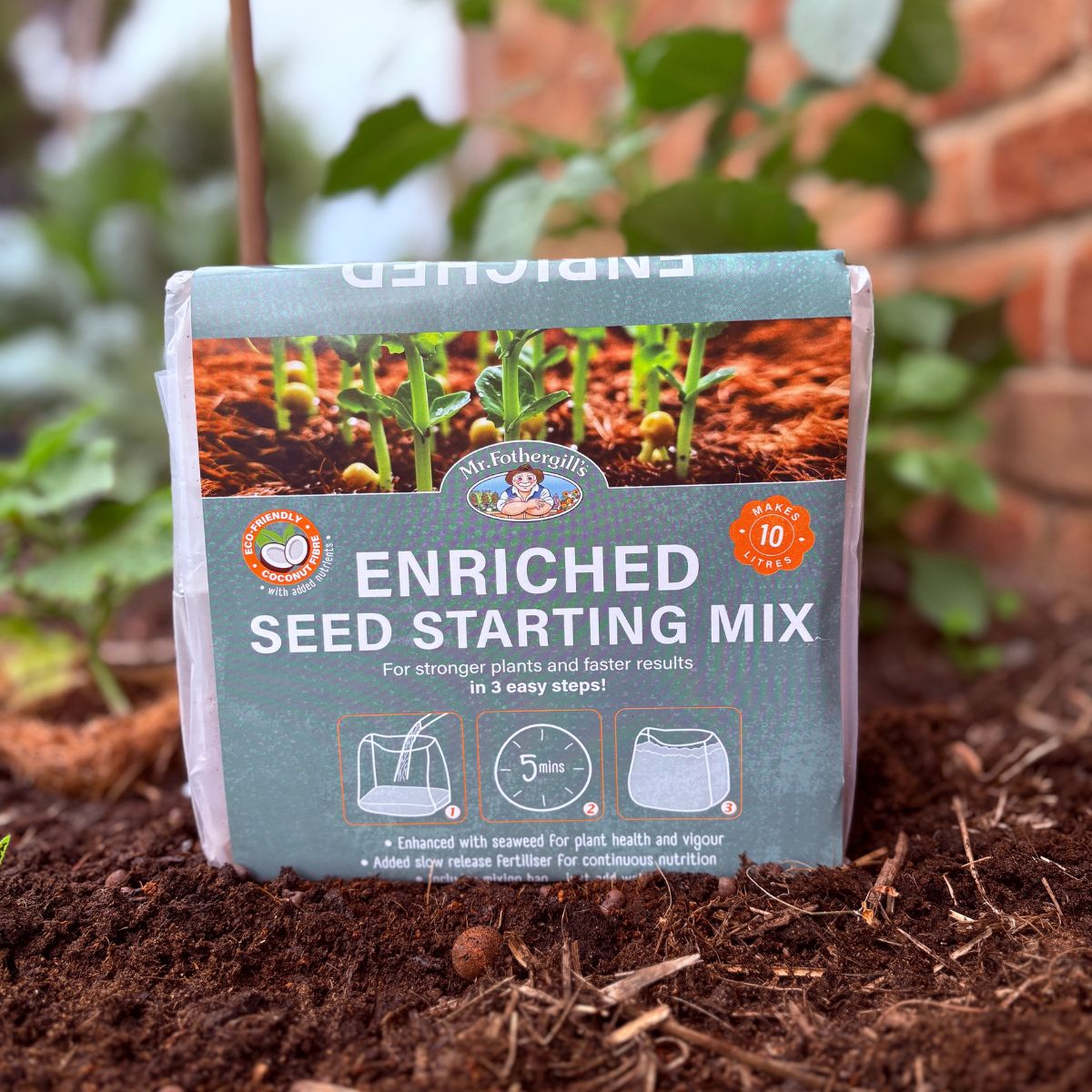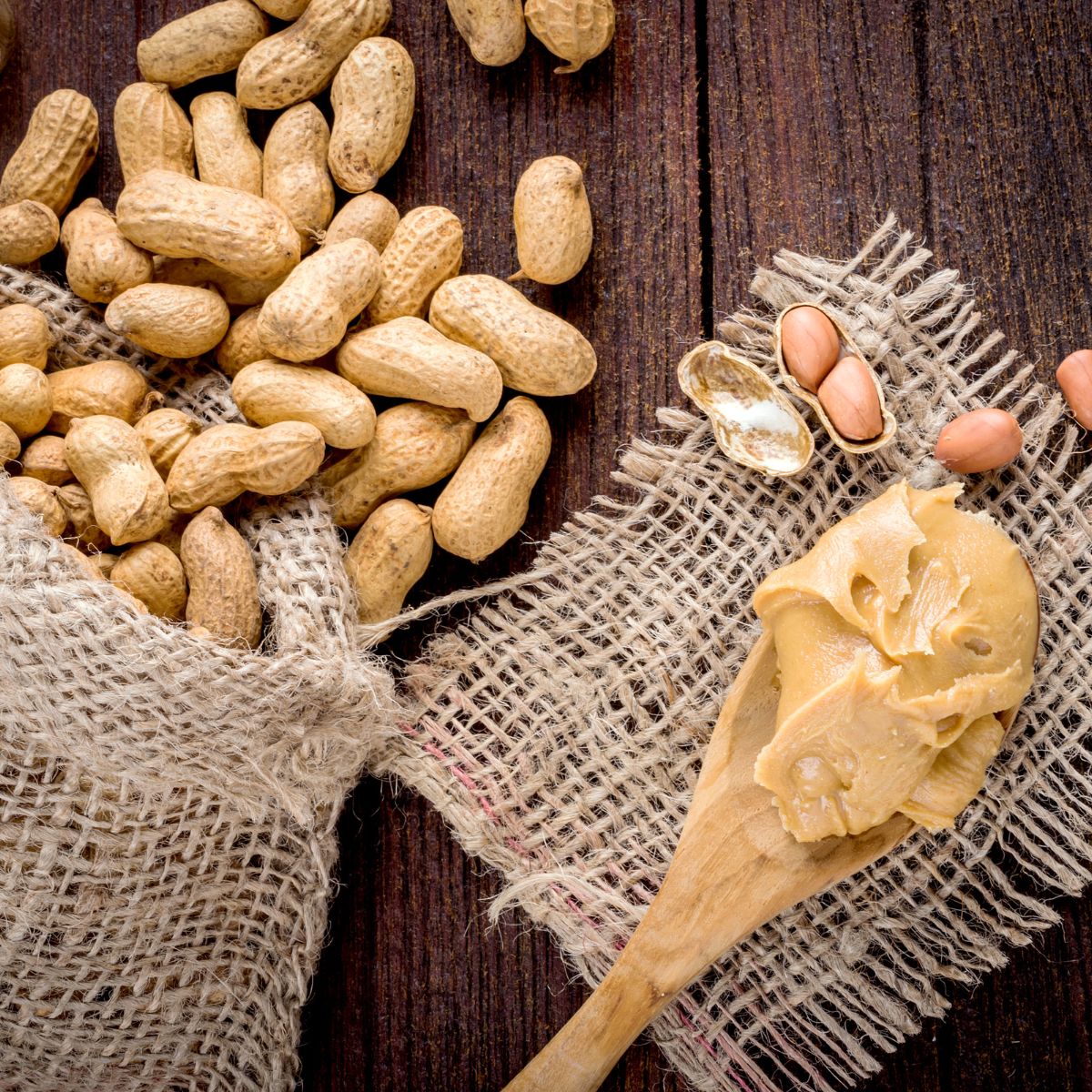Watering
Water your hippeastrum bulbs as required, or as the soil begins to dry out. They are tolerant of drought, so be cautious not to water them too frequently. Make sure never to water the bulb's nose; instead, water only the soil.
Feeding
Amaryllis will benefit from being fed a balanced fertiliser with an NPK ratio of 10-10-10 to provide them with the necessary nutrients (learn more about selecting the right fertiliser in our blog). This should be done once every two to three weeks, or as stated in the instructions.
Companion Planting
The process of companion planting is simple yet effective, allowing plants to mutually benefit from one another. This involves planting beneficial plants nearby your main plants to support their growth. There are several types of flowers that we recommend planting alongside your hippeastrums for both aesthetic appeal and growth benefits.
To complement the look of your hippeastrums, growing ranunculus bulbs or dahlia tubers alongside them is worthwhile due to their vibrant and eye-catching appearances. Growing thyme seeds is valuable, as it works as a groundcover for your hippeastrums, minimising the growth of weeds and retaining soil moisture.
Pests and Diseases
Amaryllis is highly resistant to pests and diseases and is a straightforward flower plant to look after, so it generally doesn’t have too many problems in this regard. However, there are one or two things to watch out for:
- Snails or slugs may attack the leaves, but this generally can be tolerated.
- One of the main problems that amaryllis can encounter is red blotch, also known as leaf scorch. This is a disease that appears as red spots on their leaves and can spread if not taken care of. Affected leaves should be removed, and a copper-based fungicide should be applied to reduce the spread.

 How to Grow Hippeastrum Bulbs
How to Grow Hippeastrum Bulbs

 Soil Preparation
Soil Preparation

 How to Plant Hippeastrum Bulbs
How to Plant Hippeastrum Bulbs

 How to Care for Amaryllis
How to Care for Amaryllis

 Harvesting
Harvesting
 How to Grow
How to Grow
 Soil Preparation
Soil Preparation
 Planting
Planting
 Plant Care
Plant Care
 Harvesting
Harvesting

